2 Biological Bases
1/165
Earn XP
Name | Mastery | Learn | Test | Matching | Spaced |
|---|
No study sessions yet.
166 Terms
biological psychology
a branch of psychology concerned with the links between biology and behavior.
neuron
a nerve cell; the basic building block of the nervous system.
dendrites
the bushy, branching extensions of a neuron that receive messages and conduct impulses toward the cell body.
axon
the extension of a neuron, ending in branching terminal fibers through which messages pass to other neurons or to muscles or glands.
myelin sheath
a layer of fatty tissue segmentally encasing the fivers of many neurons; enables vastly greater transmission speed of neural impulses as the pulse hops from one node to the next.
action potential
a neural impulse; a brief electrical charge that travels down an axon.
refractory period
a period of inactivity after a neuron has fired
threshold
the level of stimulation required to trigger a neural impulse.
all-or-none response
a neuron’s reaction of either firing (with a full-strength response) or not firing at all.
synapse
the junction between the axon tip of the sending neuron and the dendrite or cell body of the receiving neuron. The tiny gap at the junction is called the synaptic gap or synaptic cleft.
neurotransmitters
chemical messengers that cross the synaptic gaps between neurons. When released by the sending neuron, they travel across the synapse and bind to the receptor sites on the receiving neuron, thereby influencing whether that neuron will generate a neural impulse.
reuptake
a neurotransmitter's reabsorption by the sending neuron.
endorphins
"morphine within" - natural, opiate-like neurotransmitters linked to pain control and to pleasure.
agonist
a molecule that, by binding to a receptor site, stimulates a response.
antagonist
a molecule that, by binding to a receptor site, inhibits or blocks a response.
nervous system
the body's speedy electrochemical communication network, consisting of all the nerve cells of the peripheral and central nervous systems.
central nervous system (CNS)
the brain and spinal cord.
peripheral nervous system (PNS)
the sensory and motor neurons that connect the central nervous system (CNS) to the rest of the body.
nerves
bundled axons that form neural cables connecting the central nervous system with muscles, glands, and sense of organs.
sensory (afferent) neurons
neurons that carry incoming information from the sensory receptors to the brain and spinal cord.
motor (efferent) neurons
neurons that carry outgoing information from the brain and spinal cord to the muscles and glands.
interneurons
neurons within the brain and spinal cord that communicate internally and intervene between sensory inputs and motor outputs.
somatic nervous system
the division of the peripheral nervous system that controls the body’s skeletal muscles. Also called the skeletal nervous system.
autonomic nervous system
the part of the peripheral nervous system that controls the glands and the muscles of the internal organs (such as the heart). Its sympathetic division arouses; its parasympathetic division calms.
sympathetic nervous system
the division of the autonomic nervous system that arouses the body, mobilizing its energy in stressful situations.
parasympathetic nervous system
the division of the autonomic nervous system that calms the body, conserving its energy.
reflex
a simple automatic response to a sensory stimulus, such as the knee-jerk response.
endocrine system
the body's "slow" chemical communication system; a set of glands that secrete hormones into the bloodstreamblood stream.
adrenal glands
pair of endocrine glands that sit just above the kidneys and secrete hormones (epinephrine and norepinephrine) that help arouse the body in times of stress.
lesion
tissue destruction; a brain lesion is a naturally or experimentally caused destruction of brain tissue.
electroencephalogram (EEG)
an amplified recording of the waves of electrical activity that sweep across the brain's surface. These waves are measured by electrodes placed on the scalp.
CT (computed tomography) scans
a series of X-ray photographs taken from different angles and combined by computer into a composite representation of a slice through the body. Also called CAT scan.
PET (positron emission tomography) scan
a visual display of brain activity that detects where a radioactive form of glucose goes while the brain performs a given task.
MRI (magnetic resonance imaging)
a technique that uses magnetic fields and radio waves to produce computer-generated images of soft tissue. Shows brain anatomy.
fMRI (functional MRI)
a technique for revealing blood flow and, therefore, brain activity by comparing successive MRI scans. Shows brain function.
brainstem
the oldest part and central core of the brain, beginning where the spinal cord swells as it enters the skull; is responsible for automatic survival functions.
limbic system
doughnut-shaped neural system (including the hippocampus, amygdala, and hypothalamus) located below the cerebral hemispheres; associated with emotions and drives.
glial cell
cells in the nervous system that support, nourish, and protect neurons.
association areas
areas of the cerebral cortex that are not involved in primary motor or sensory functions; rather, they are involved in higher mental functions such as learning, remembering, thinking, and speaking.
plasticity
the brain's ability to change, especially during childhood, by reorganizing after damage or by building new pathways based on experience.
neurogenesis
the formation of new neurons
split brain
a condition resulting from surgery that isolates the brain's two hemispheres by cutting the fibers (mainly those of the corpus callosum connecting them)
Most often after repeated seizures (epilepsy)
consciousness
our awareness of ourselves and our environment.
cognitive neuroscience
the interdisciplinary study of the brain activity linked with cognition (including perception, thinking, memory, and language).
dual processing
the principle that information is often simultaneously processed on separate conscious and unconscious tracks.
behavior genetics
the study of the relative power and limits of genetic and environmental influences on behavior.
environment
every non-genetic influence, from prenatal nutrition to the people and things around us.
chromosomes
threadlike structures made of DNA molecules that contain the genes.
DNA (deoxyribonucleic acid)
a complex molecule containing the genetic information that makes up the chromosomes
genes
the biochemical units of heredity that make up the chromosomes; segments of DNA capable of synthesizing a protein.
genome
the complete instructions for making an organism, consisting of all the genetic material in that organism's chromosomes.
identical twins
twins who develop from a single fertilized egg that splits in two, creating two genetically identical organisms.
fraternal twins
twins who develop from separate fertilized eggs. They are genetically no closer that brothers and sisters, but they share a fetal environment.
molecular genetics
the subfield of biology that studies the molecular structure and functions of genes.
heritability
the proportion of variation among individuals that we can attribute to genes. This may vary, depending on the range of populations and environments studied.
interaction
the interplay that occurs when the effect of one factor (such as environment) depends on another factor (such as heredity).
epigenetics
The study of environmental influences on gene expression that occurs without a DNA change
evolutionary psychology
the study of the evolution of behavior and the mind, using principles of natural selection.
natural selection
the principle that, among the range of inherited trait variations, those that lead to increased reproduction and survival will most likely be passed on to succeeding generations.
mutation
a random error in gene replication that leads to a change.
cell body
the part of a neuron that contains the nucleus; the cell’s life-support centre
MEG (magnetoencephalography)
a brain imaging technique that measures magnetic fields from the brain’s natural electrical activity
blindsight
a condition in which a person can respond to a visual stimulus without consciously experiencing it
parallel processing
processing many aspects of a problem simultaneously; generally used to process well-learned information or to solve easy problems
sequential processing
processing one aspect of a problem at a time; generally used to process new information or to solve difficult problems
heredity
the genetic transfer of characteristics from parent to offspring
social script
a culturally modelled guide for how to act in various situations
aphasia
impairment of language, usually caused by left hemisphere damage either to Broca’s area (impaired speaking) or to Wernicke’s area (impaired meaning of sentences)
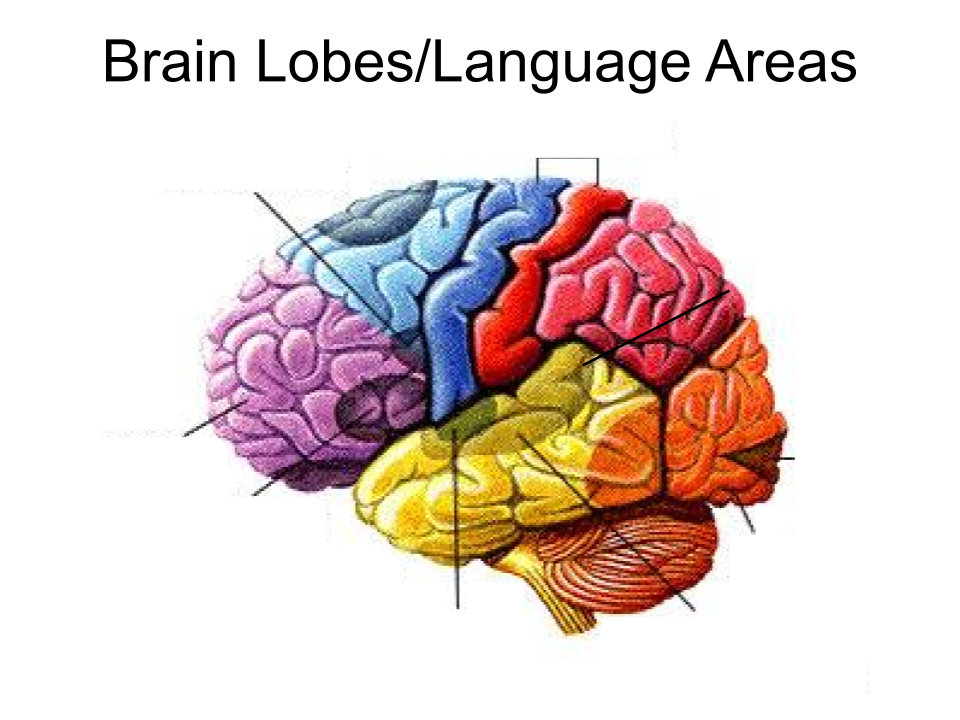
motor cortex
an area at the rear of the frontal lobes that controls voluntary movements
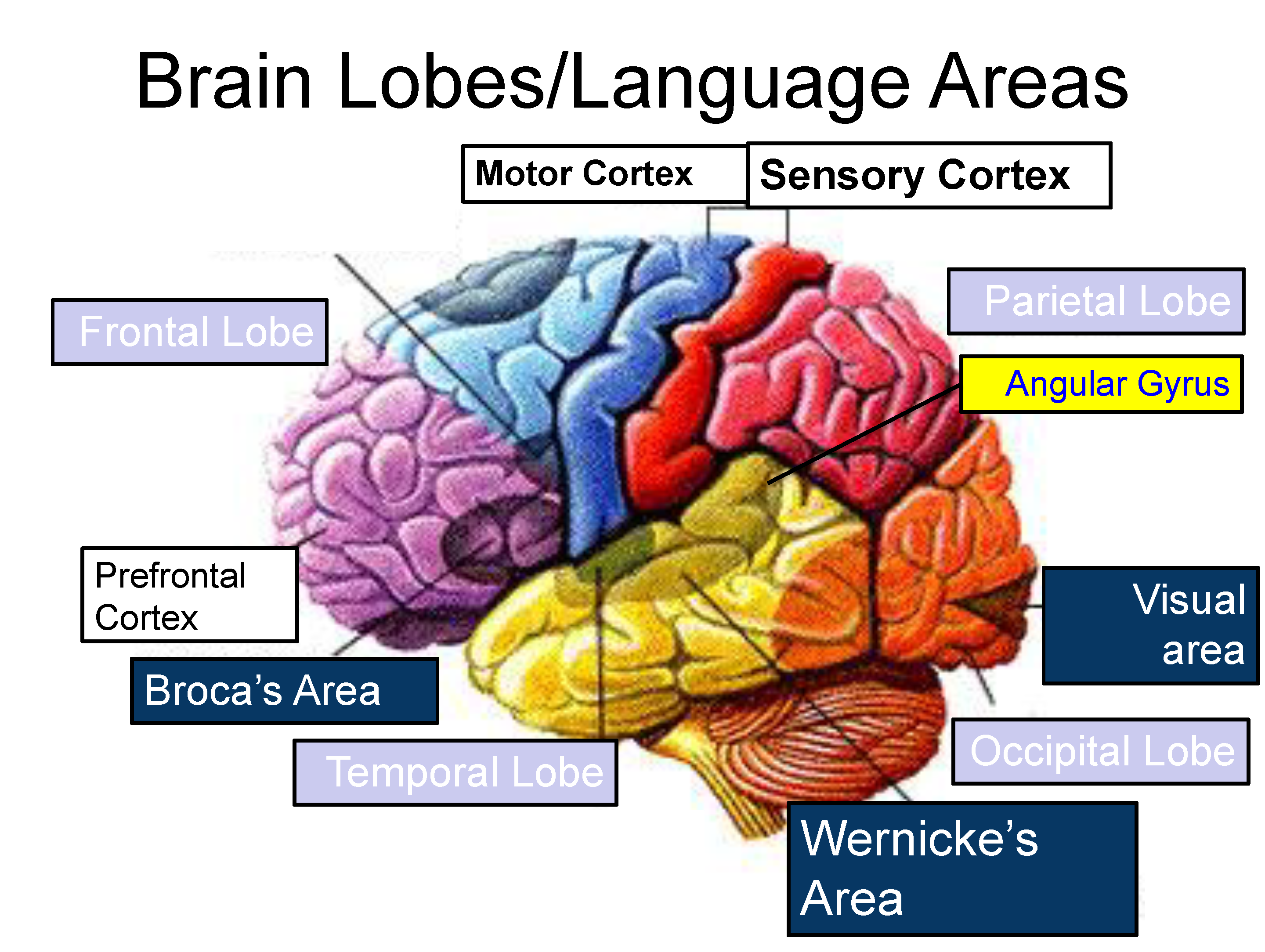
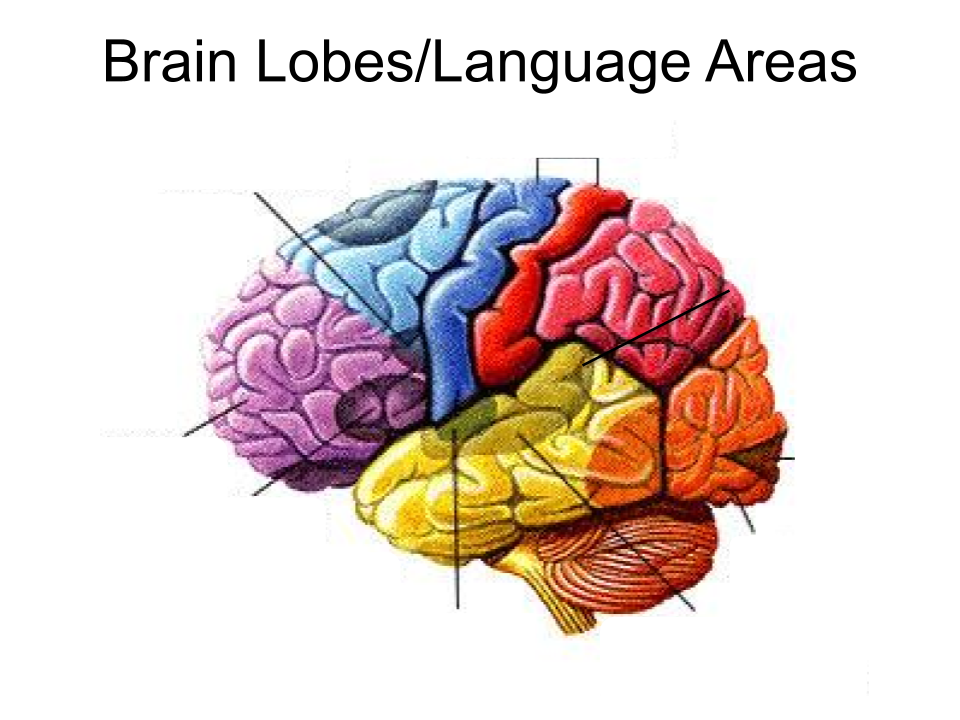
sensory cortex (somatosensory cortex)
area at the front of the parietal lobes that registers and processes body touch and movement sensations
receives information from skin surface and sense organs
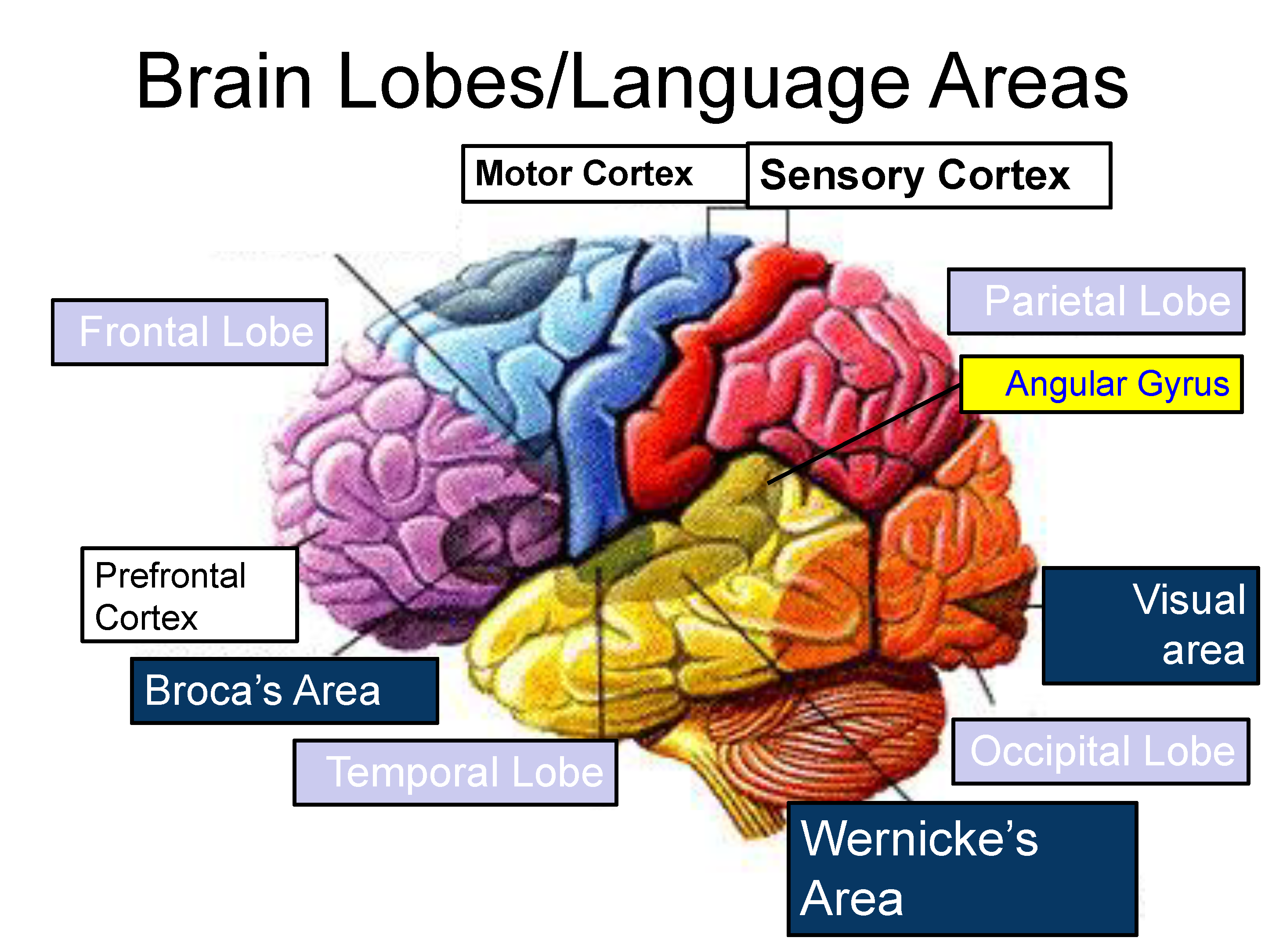
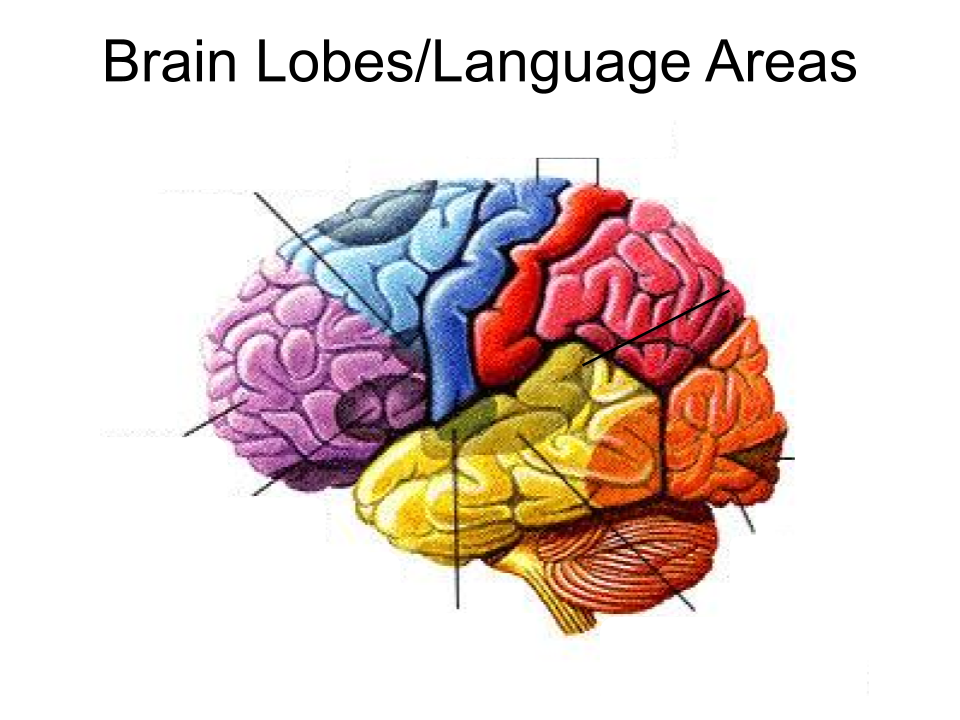
parietal lobe
portion of the cerebral cortex lying at the top of the head and toward the rear
receives sensory input for touch and body position
proprioception

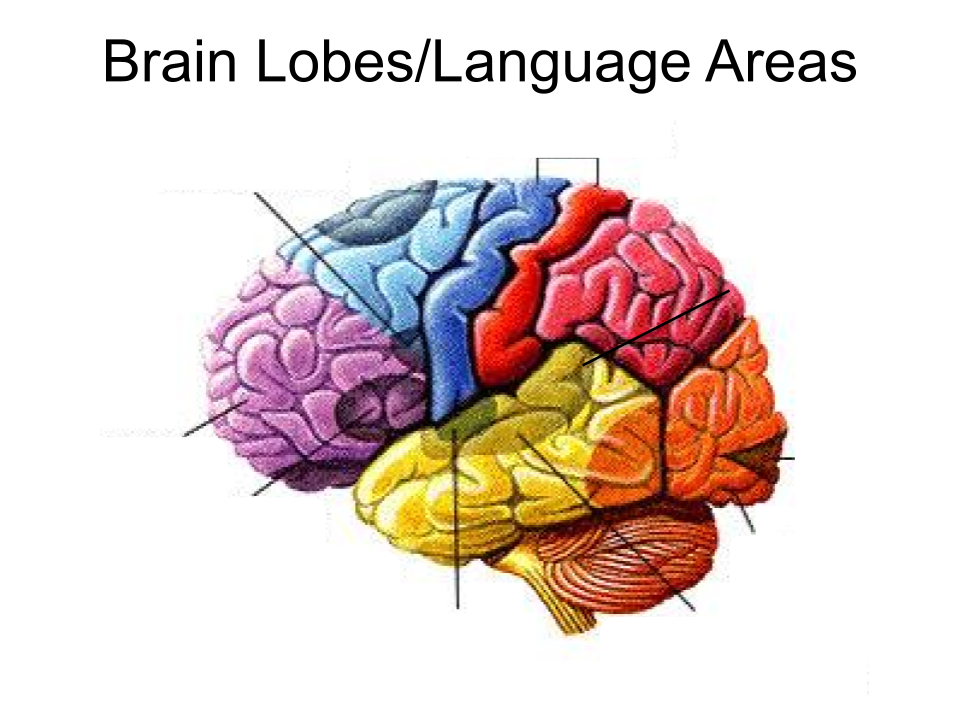
visual area
involved in processing of visual input
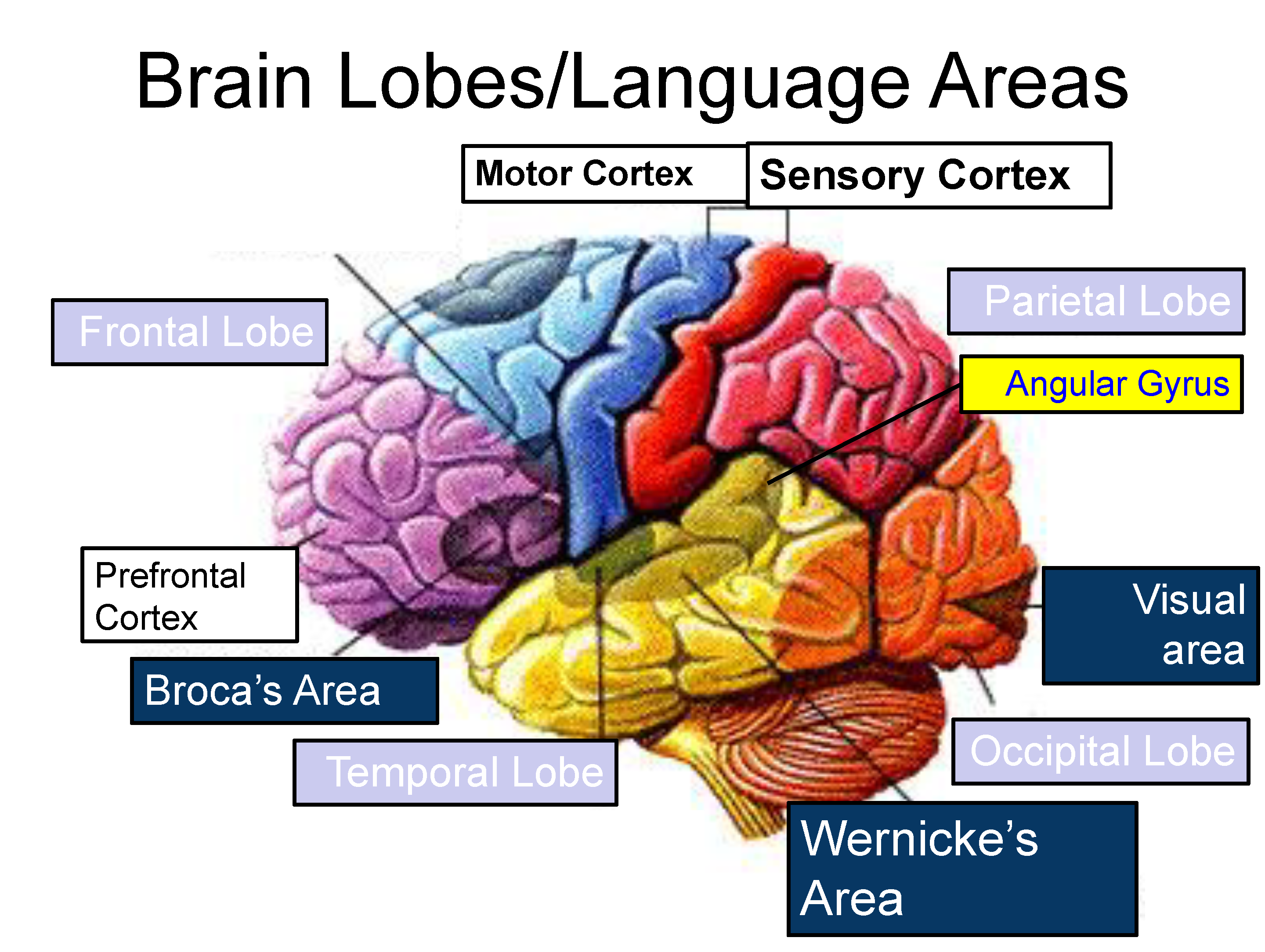
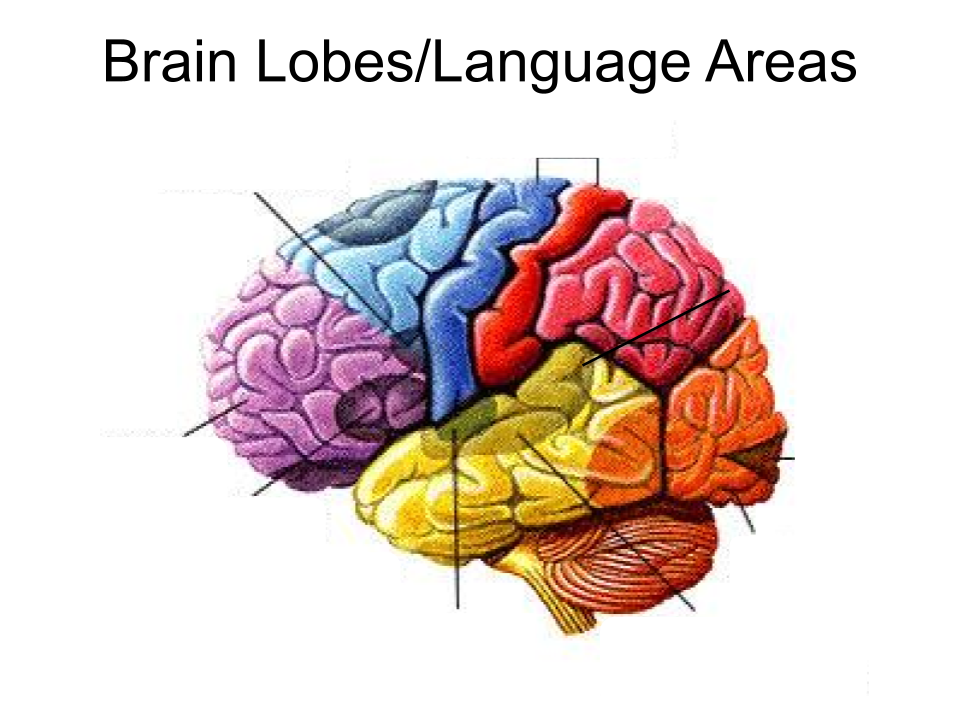
occipital lobe
portion of the cerebral cortex lying at the back of the head
includes areas that receive information from the visual fields.
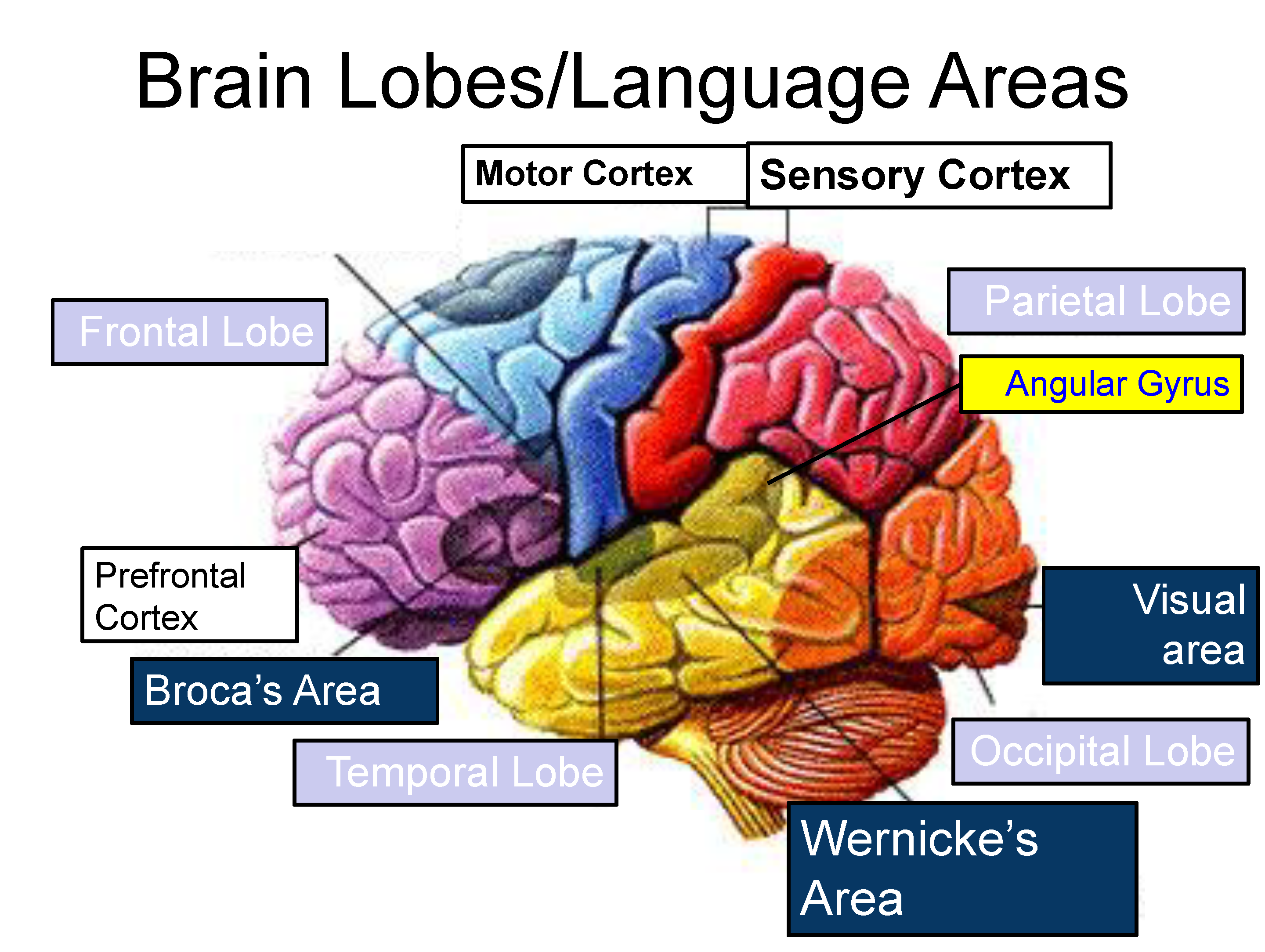
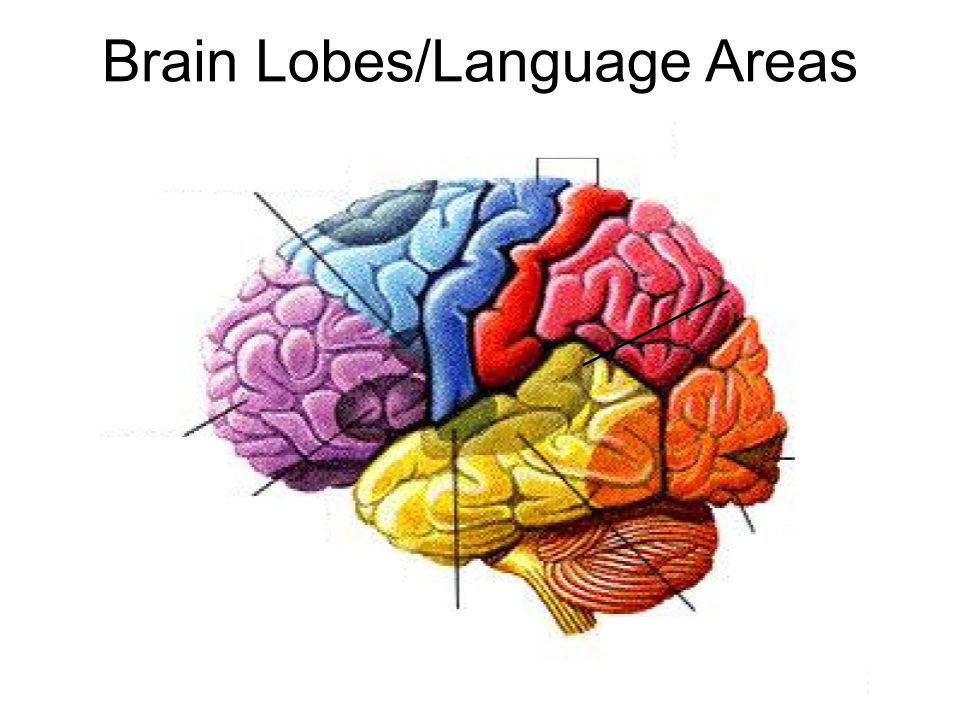
Wernicke’s area
a brain area involved in language comprehension and expression; usually in the left temporal lobe
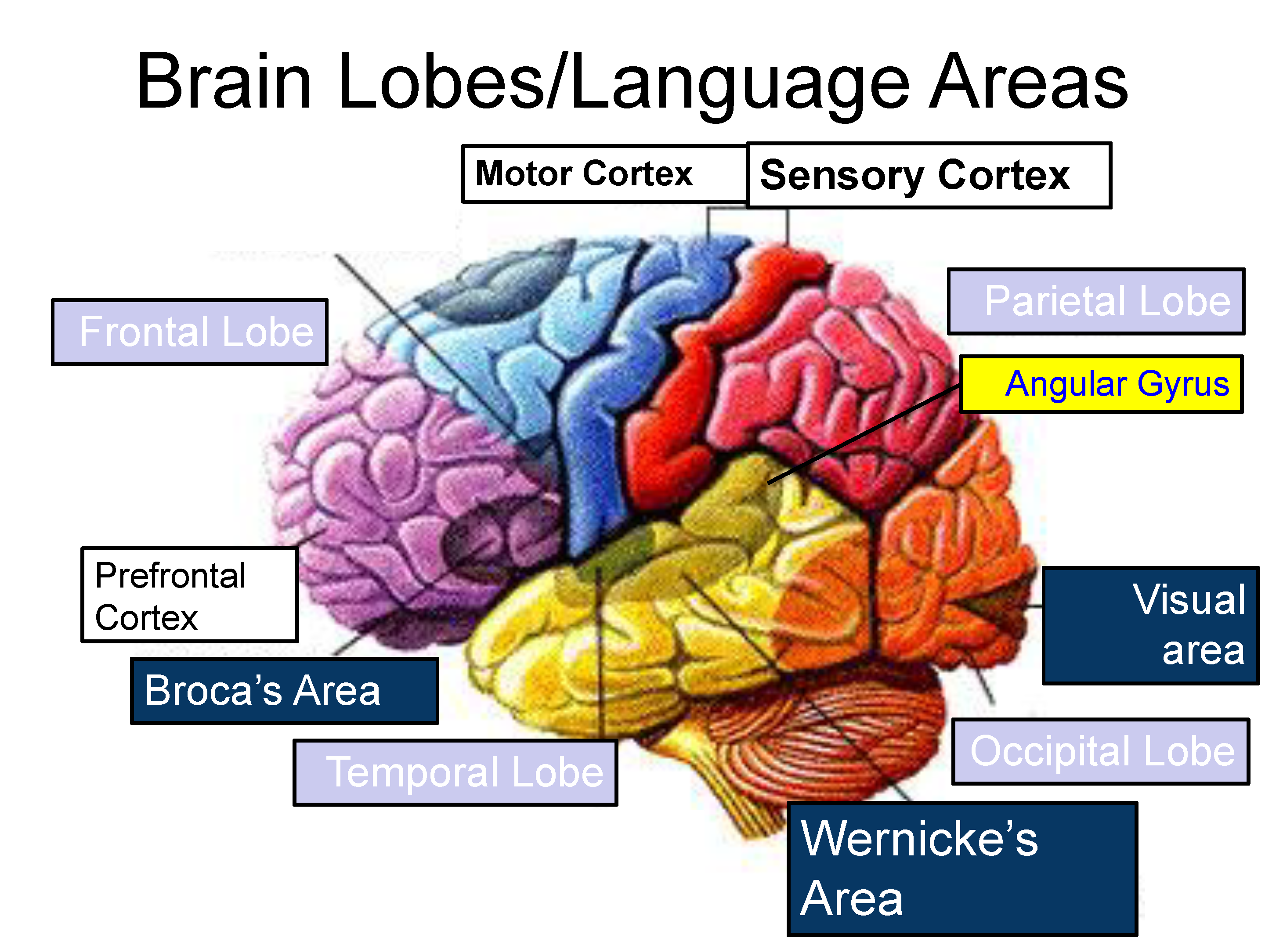

temporal lobe
portion of the cerebral cortex lying roughly above the ears
includes the auditory areas, each receiving information primarily from the opposite ear.
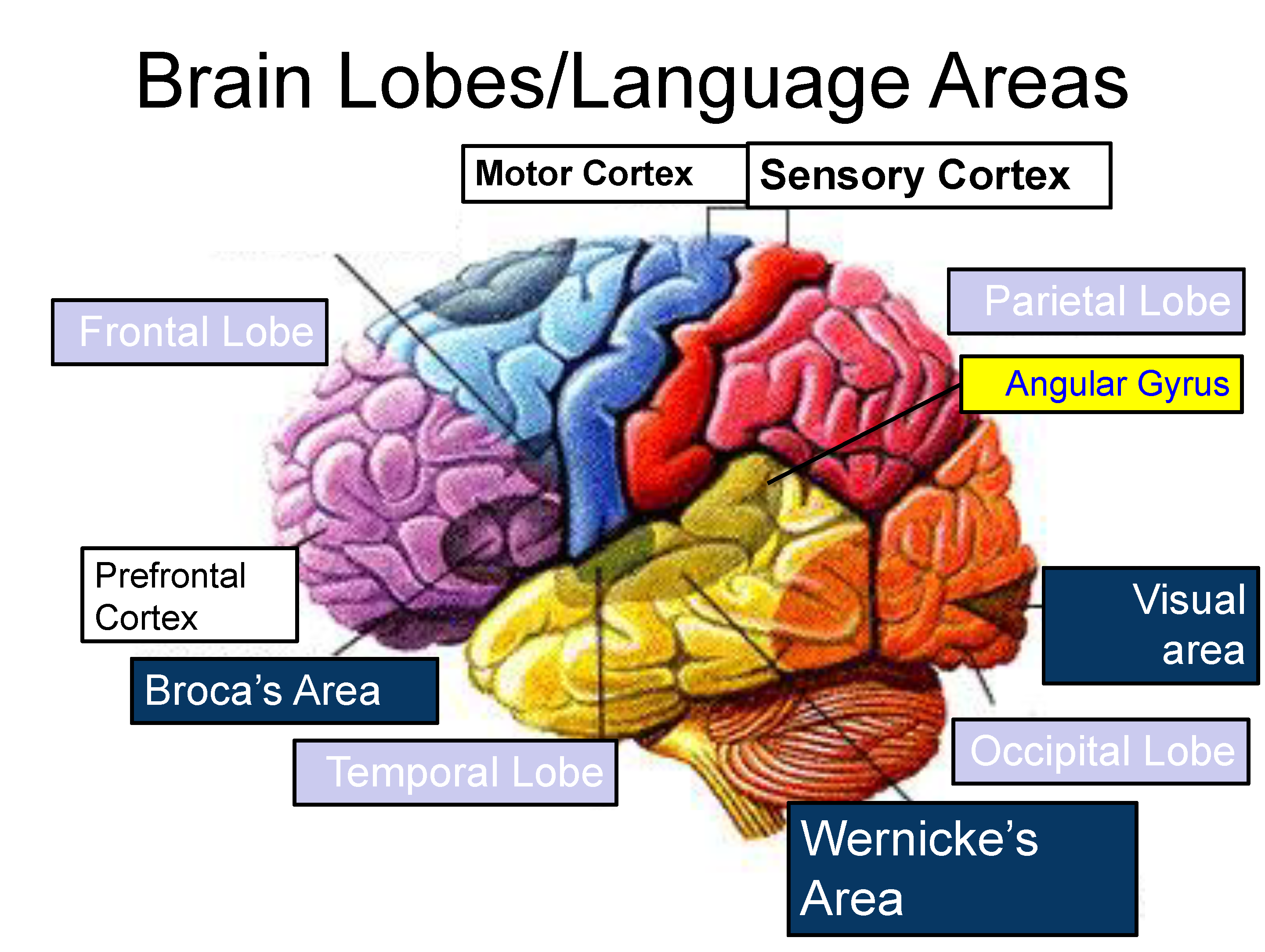
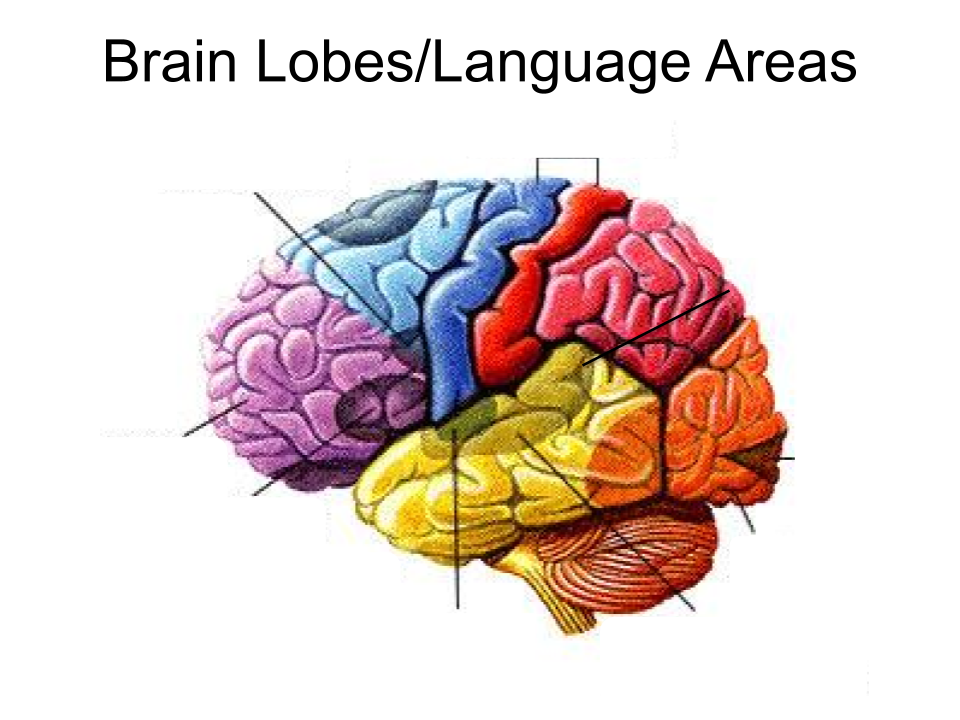
Broca’s area
a brain area involved in speaking
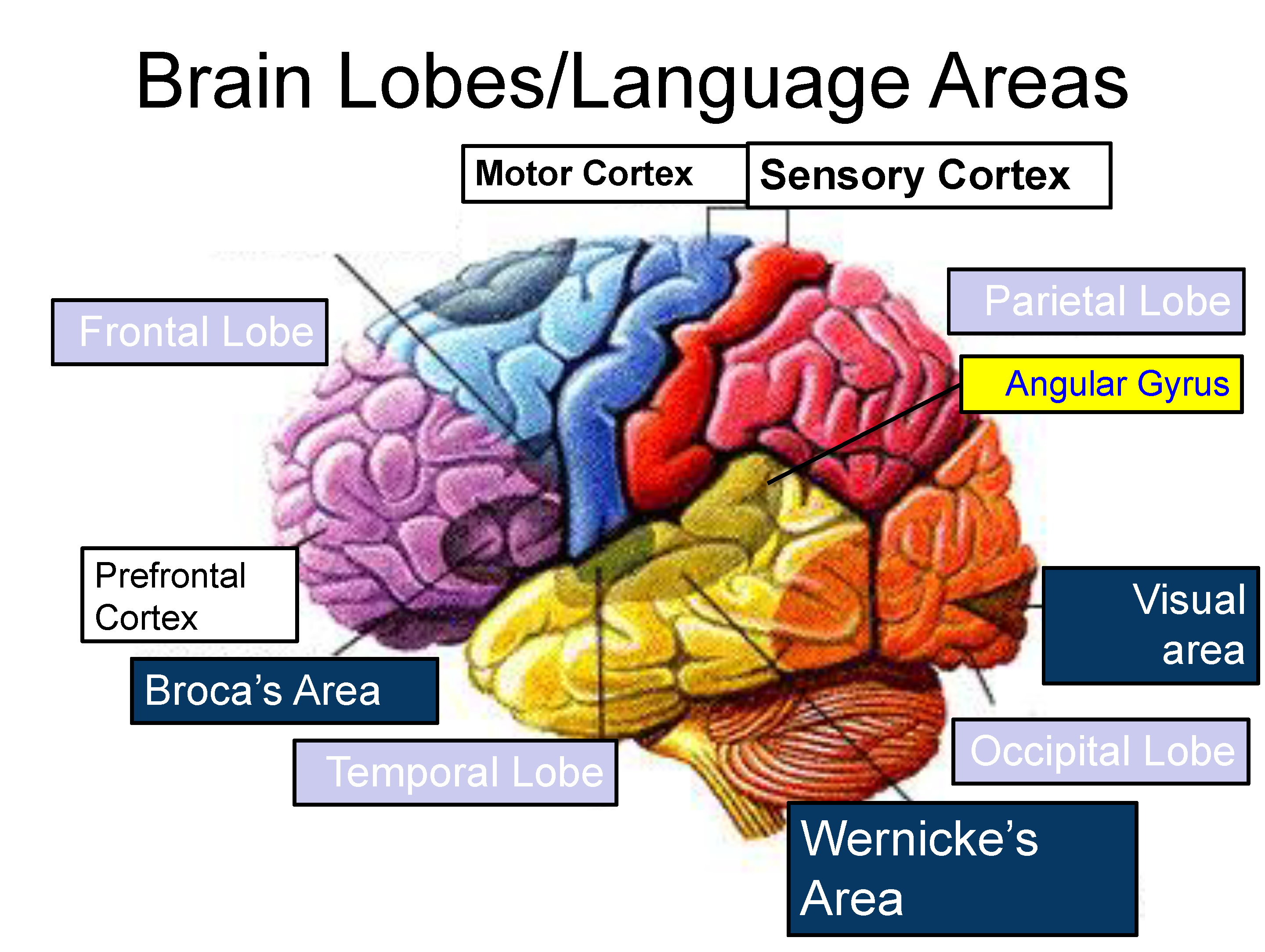
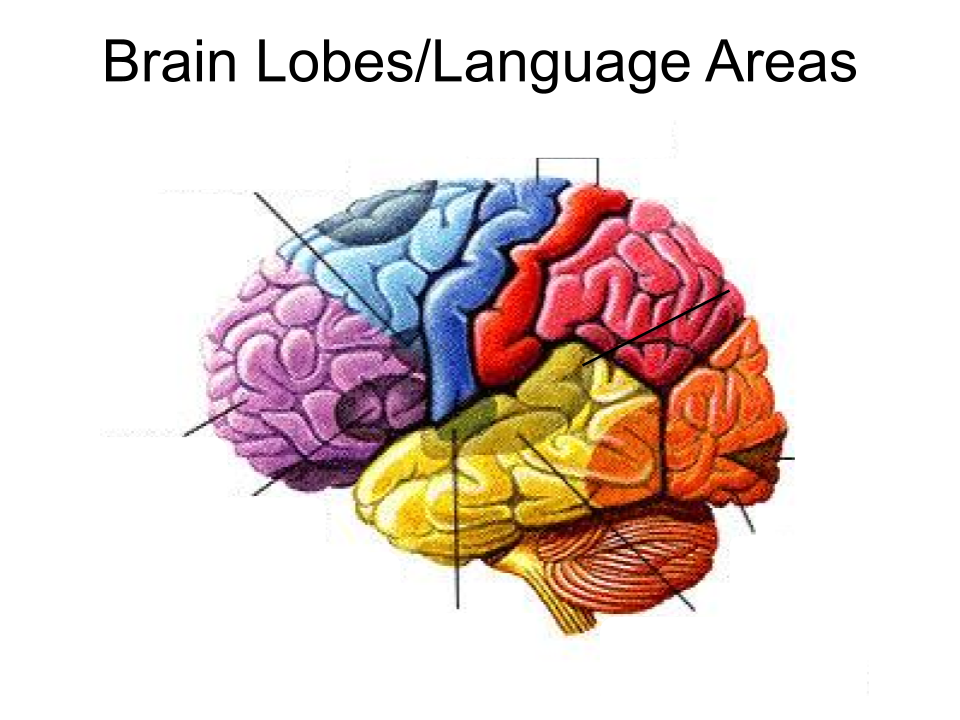
prefrontal cortex
aids emotion regulation
located in the forward part of the frontal lobes
enables judgement, planning, and processing of new memories
damage can impact ability to plan and control emotions
case study: Phineas Gage
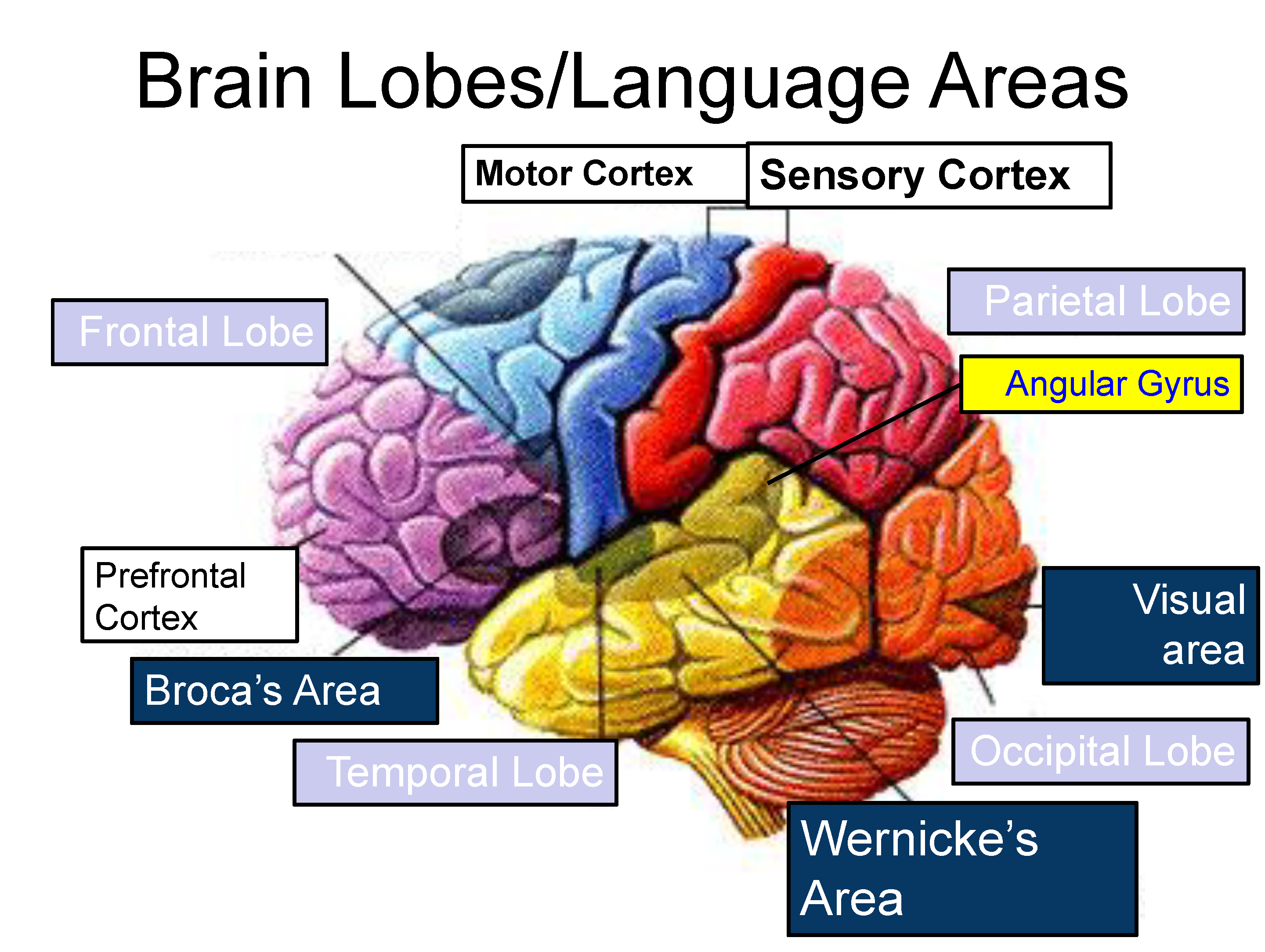

frontal lobe
speaking, making plans and judgments, voluntary muscle movements
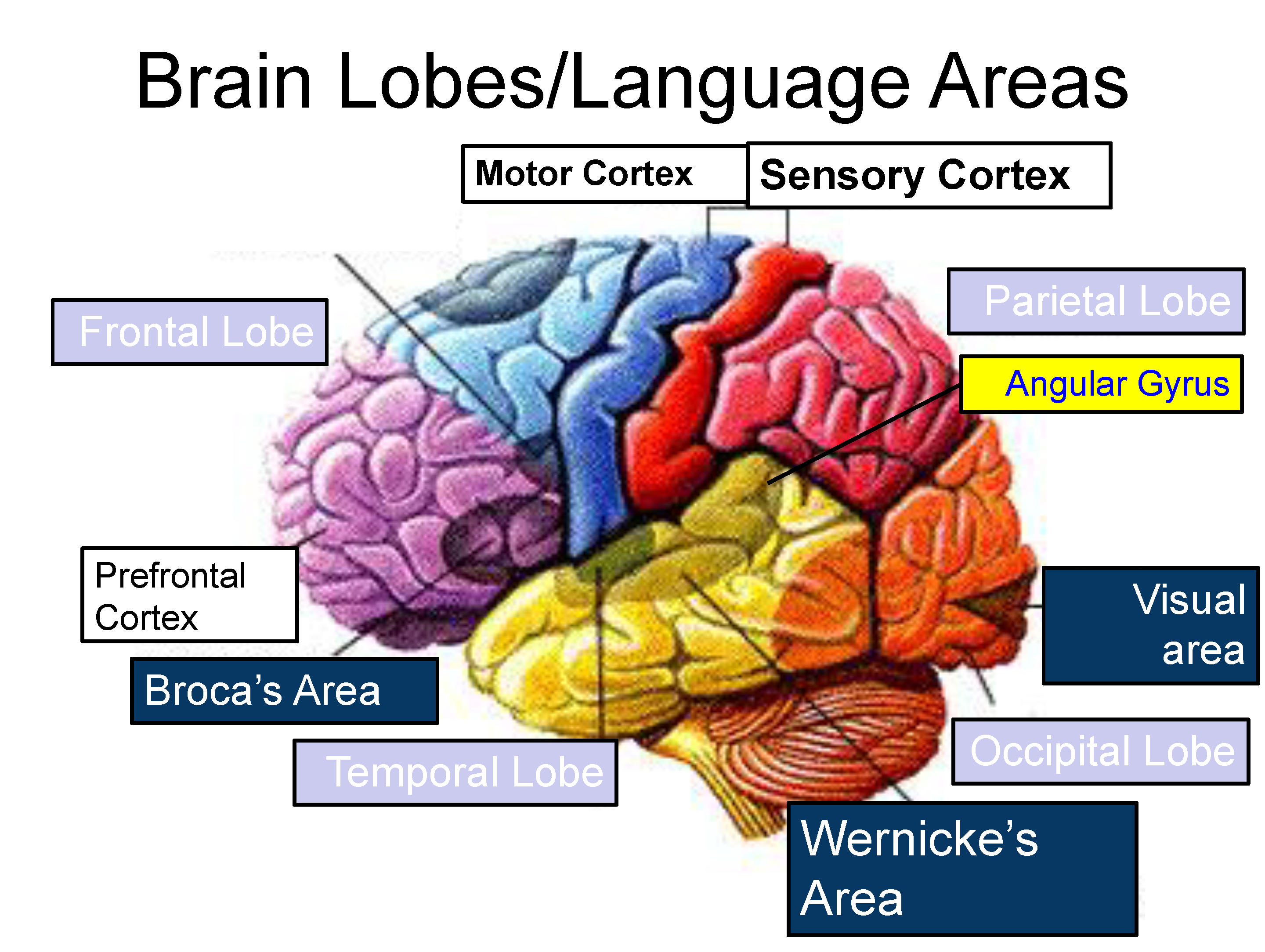
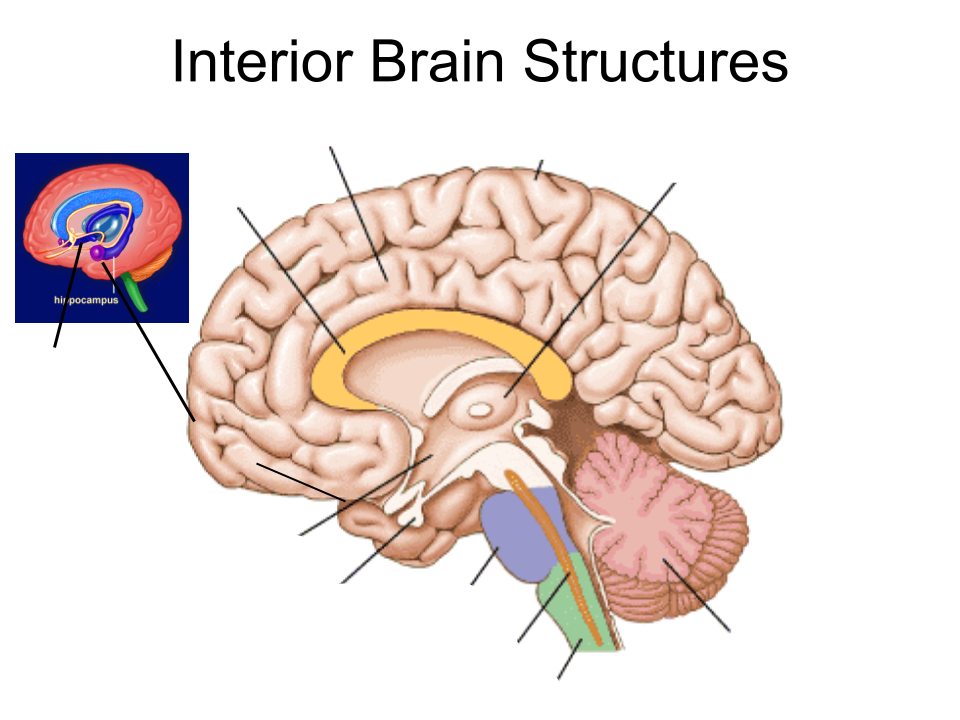
cerebrum
largest part of brain
handles a wide ranges of responsibilities
Includes
Frontal lobe
Occipital lobe
Temporal lobe
Parietal lobe
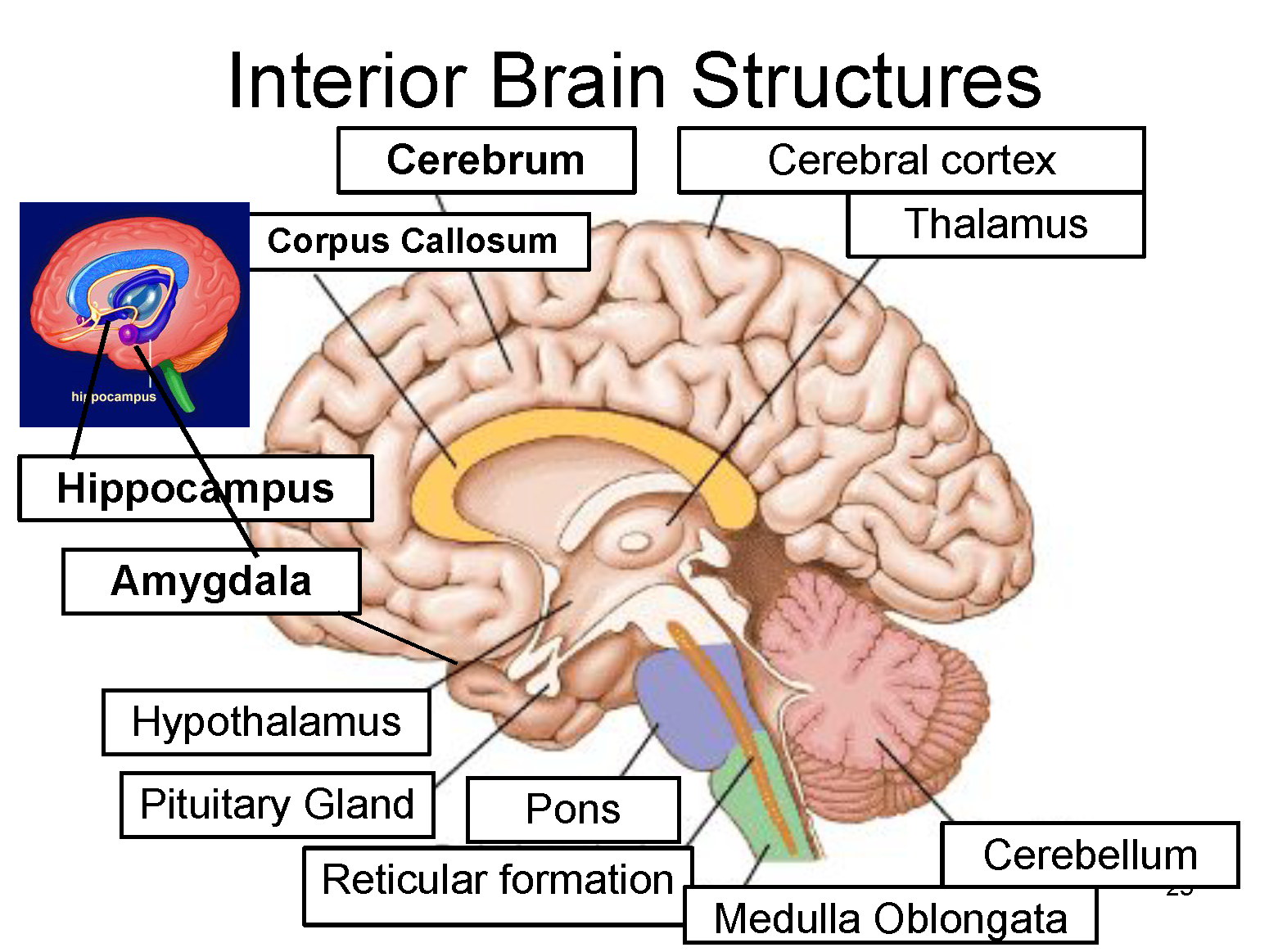
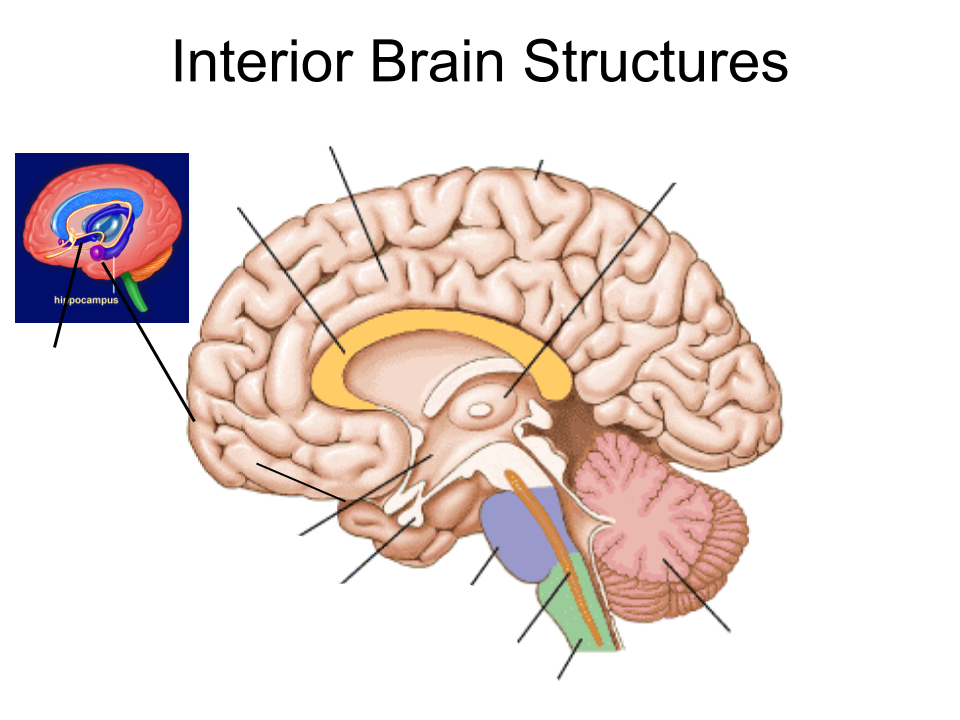
cerebral cortex
the body's ultimate control and information processing centre for higher-level thinking
the intricate fabric of interconnected neural cells covering the cerebral hemispheres
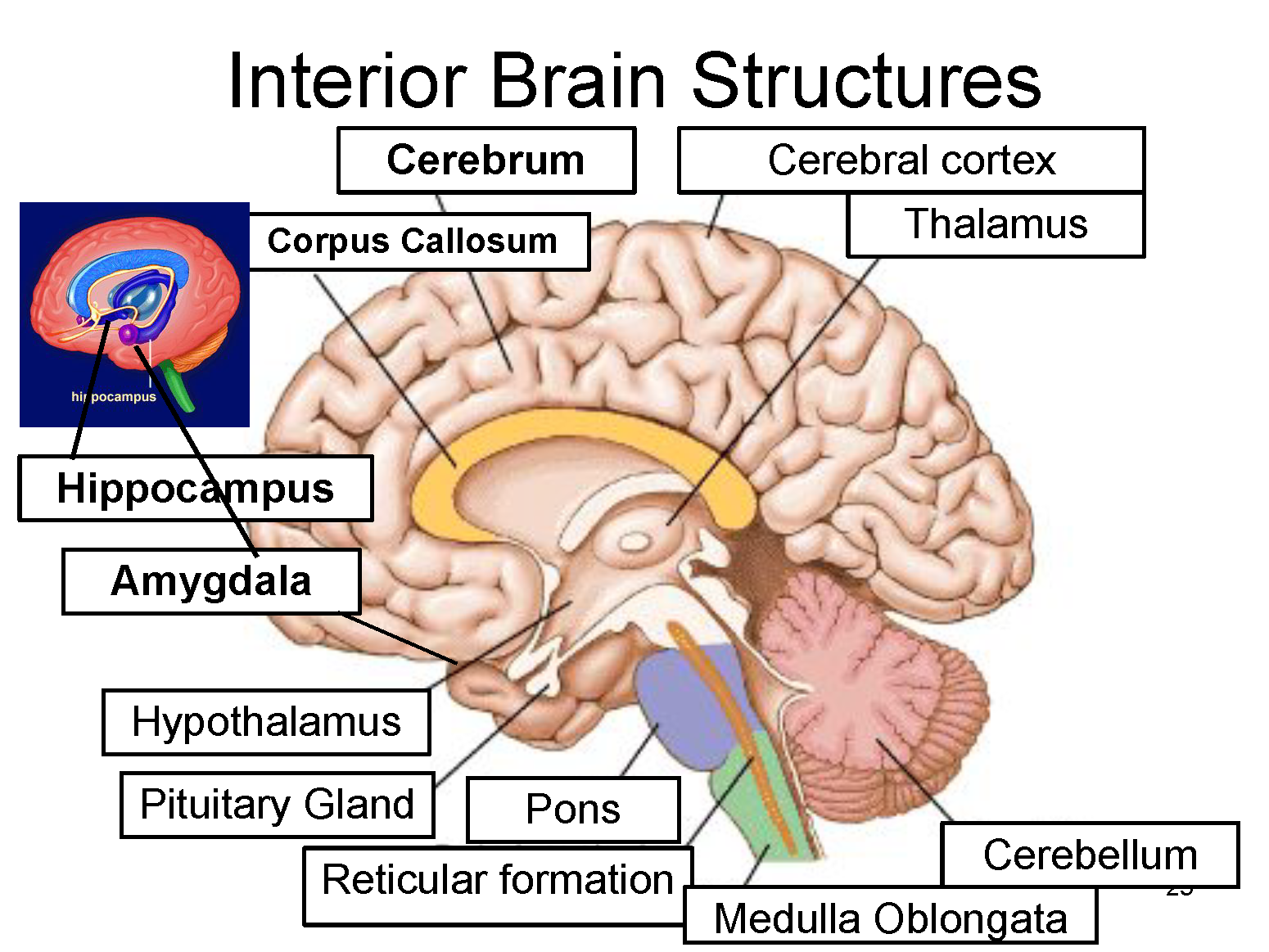
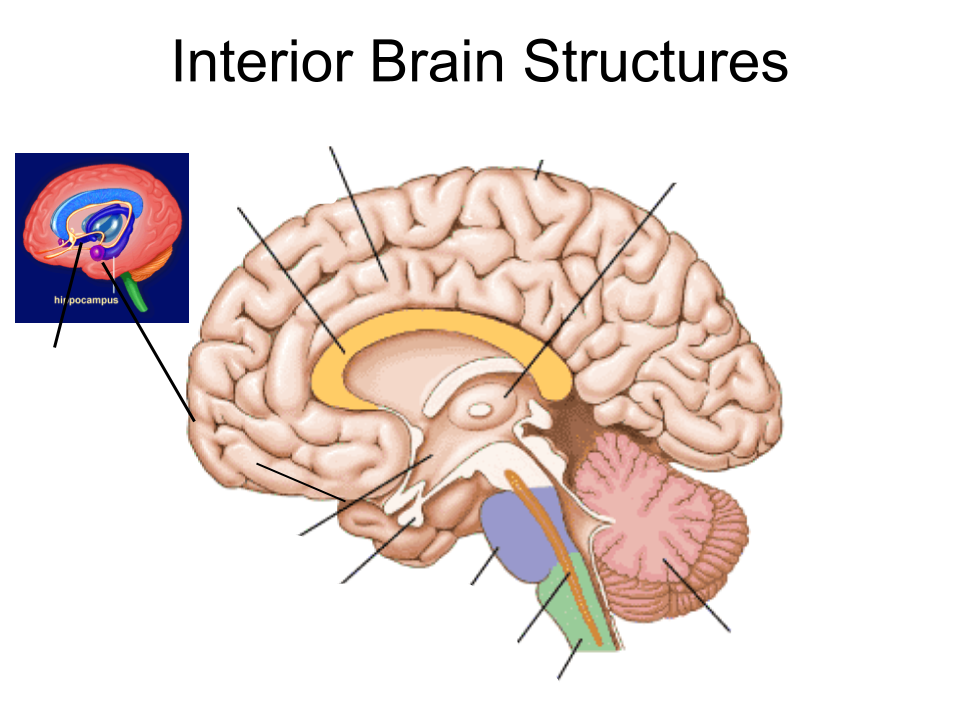
thalamus
part of the brain stem
brain’s sensory switchboard
directs messages to the sensory areas in the cortex and transmits replies to the cerebellum and medulla
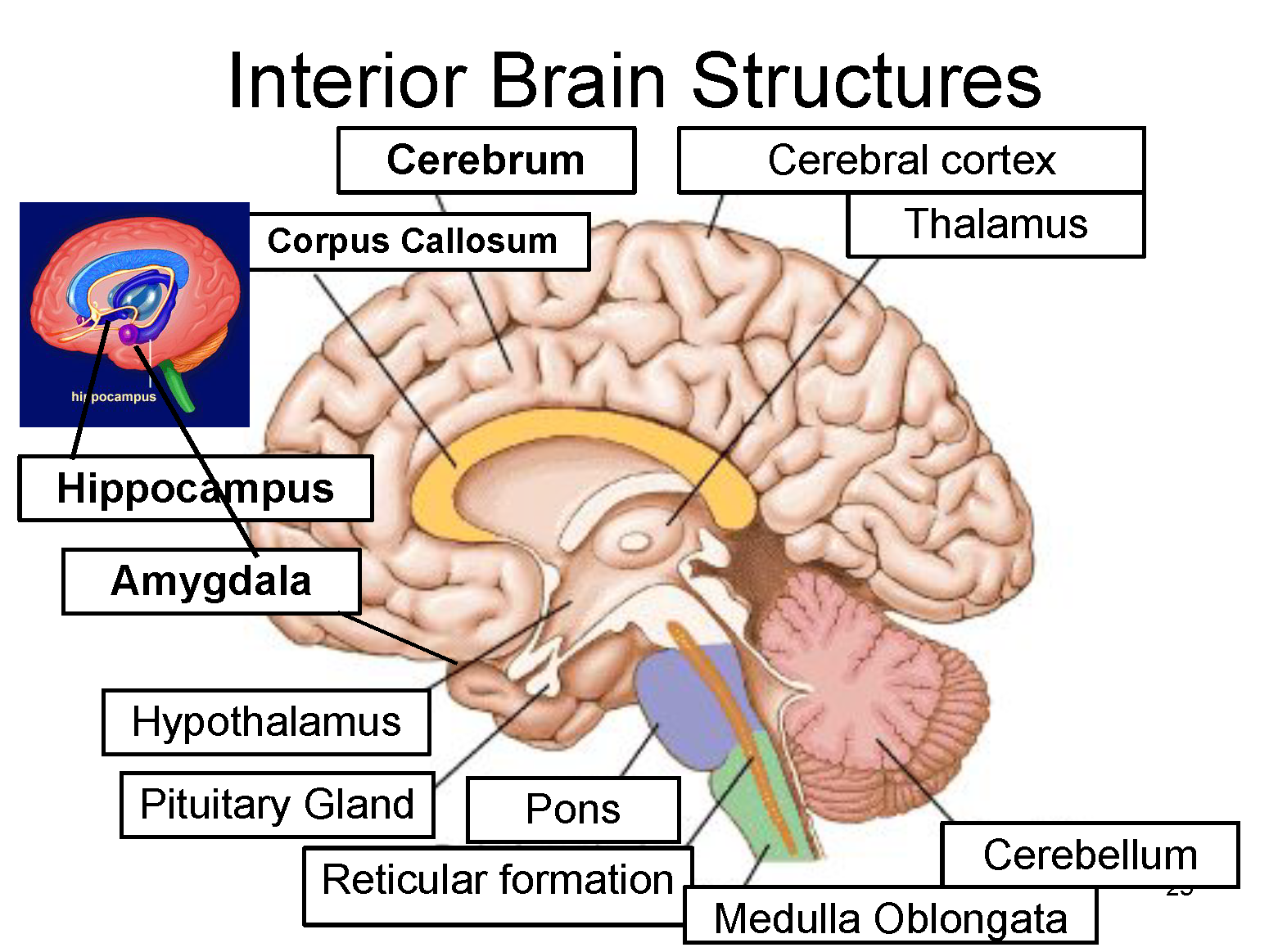
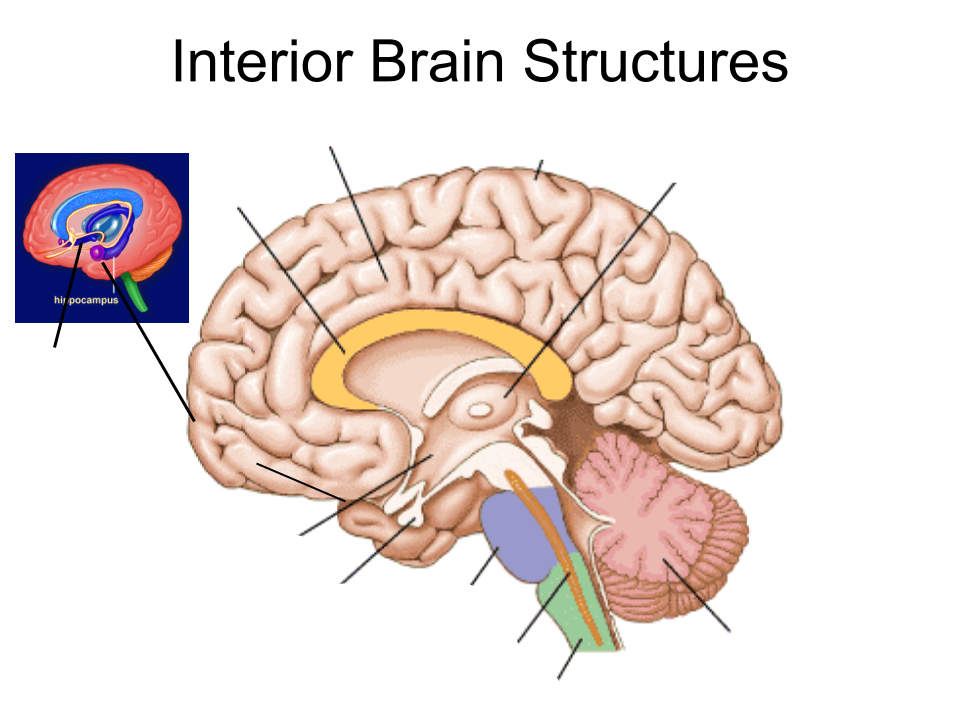
corpus callosum
the large band of neural fibers connecting the two brain hemispheres and carrying messages between them
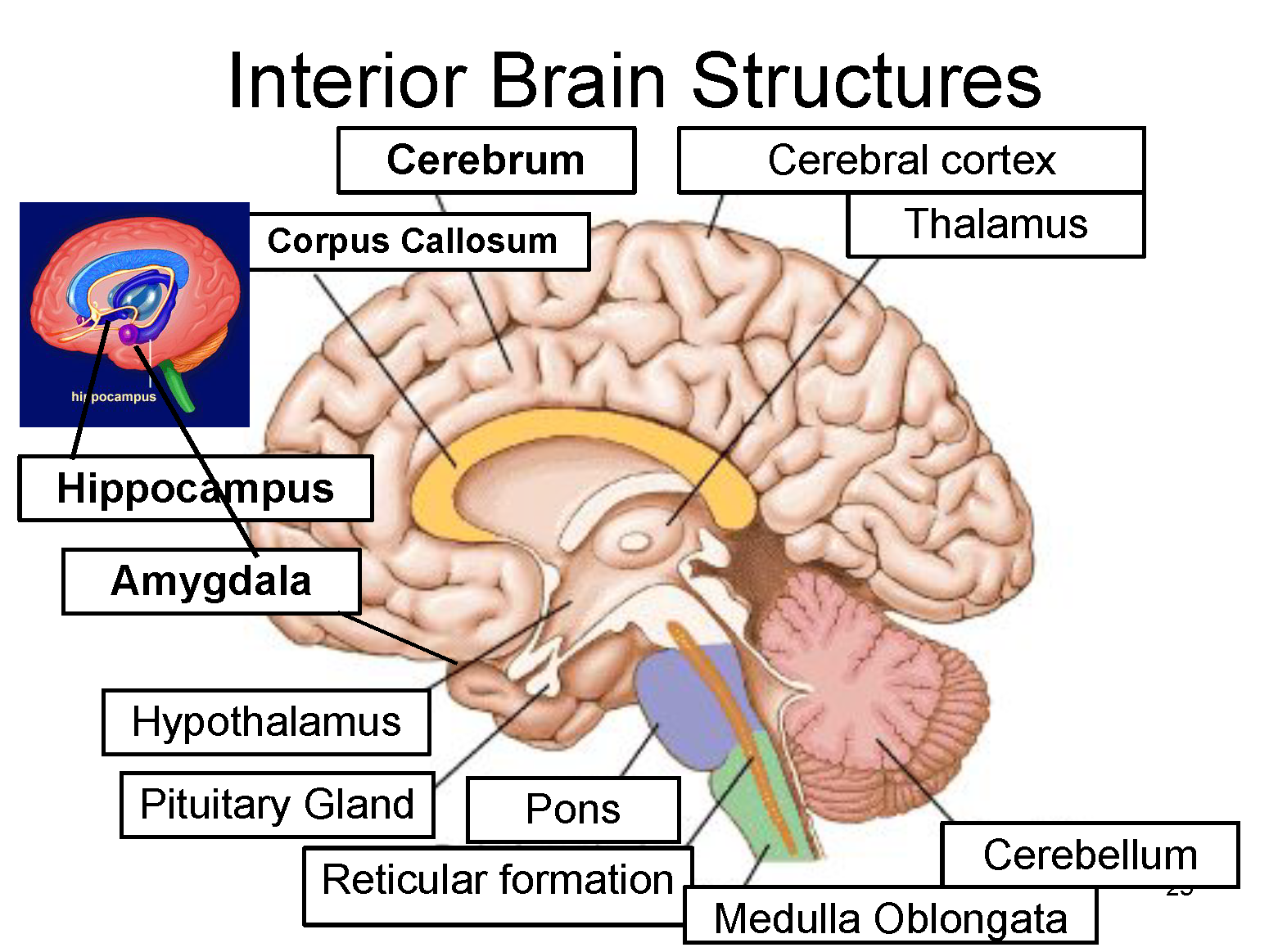
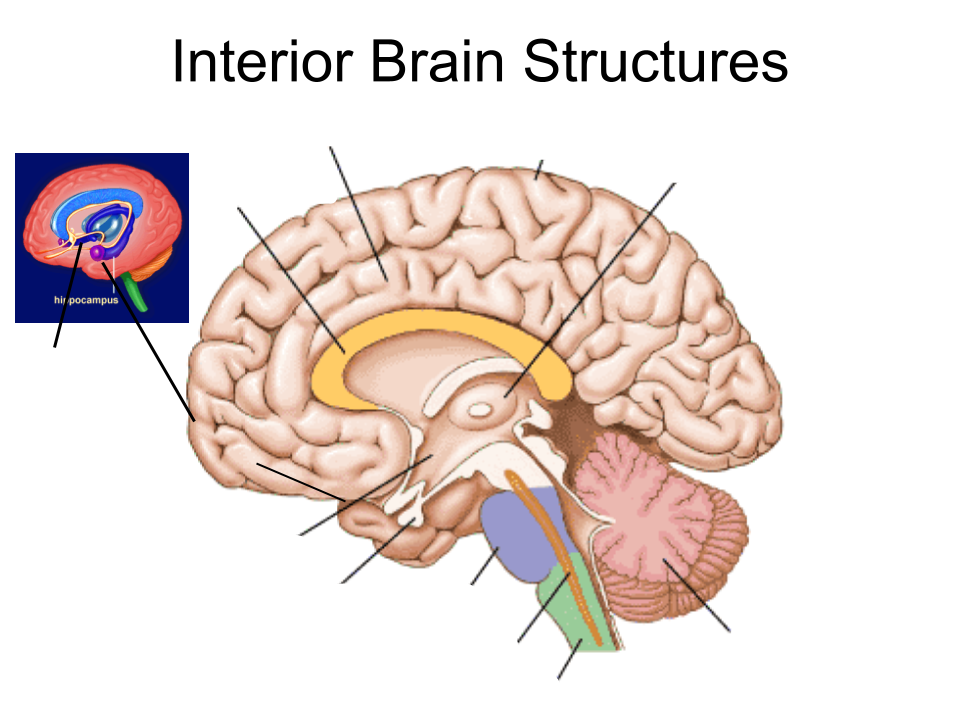
hippocampus
part of the limbic system
processes conscious, explicit memories
as we age, size decreases and function declines
can appear smaller after repeated concussions
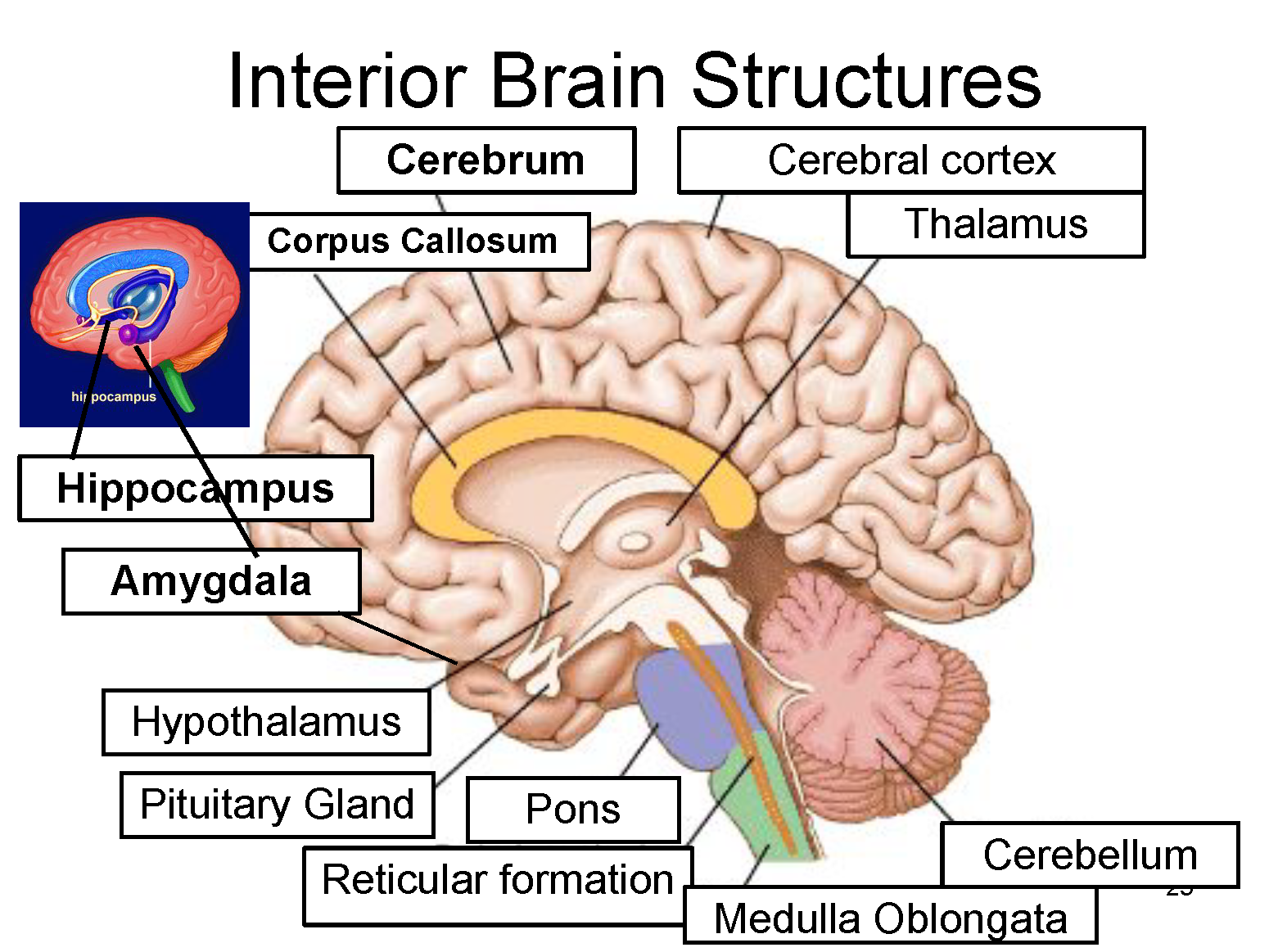
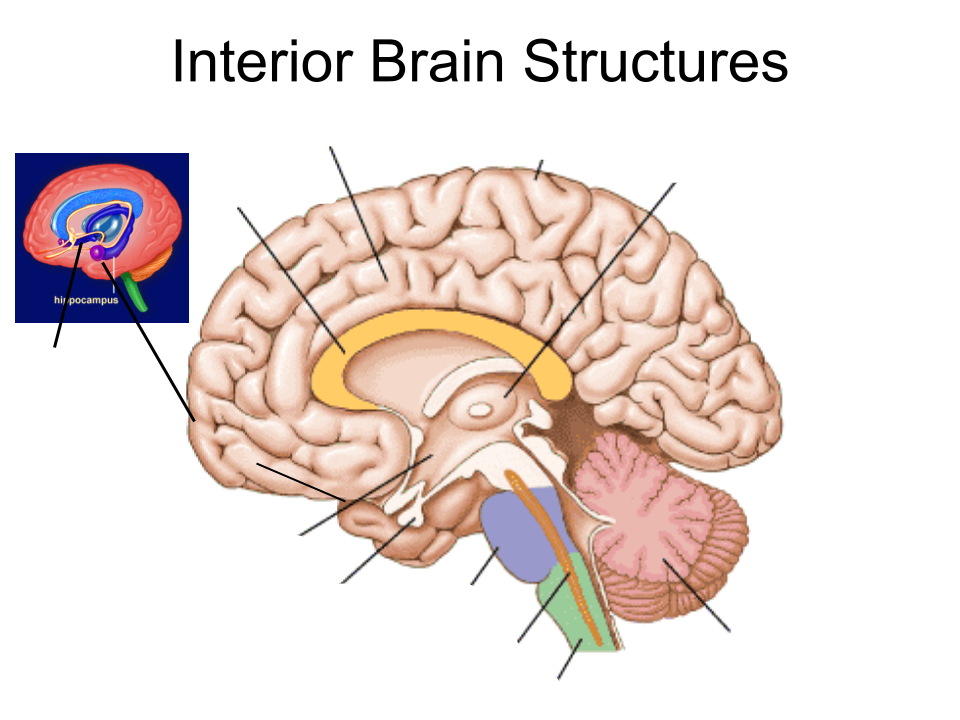
amygdala
two almond-shaped neural clusters
part of the limbic system
linked to emotions of fear and anger
criminal behaviour can be linked to abnormalities of this structure

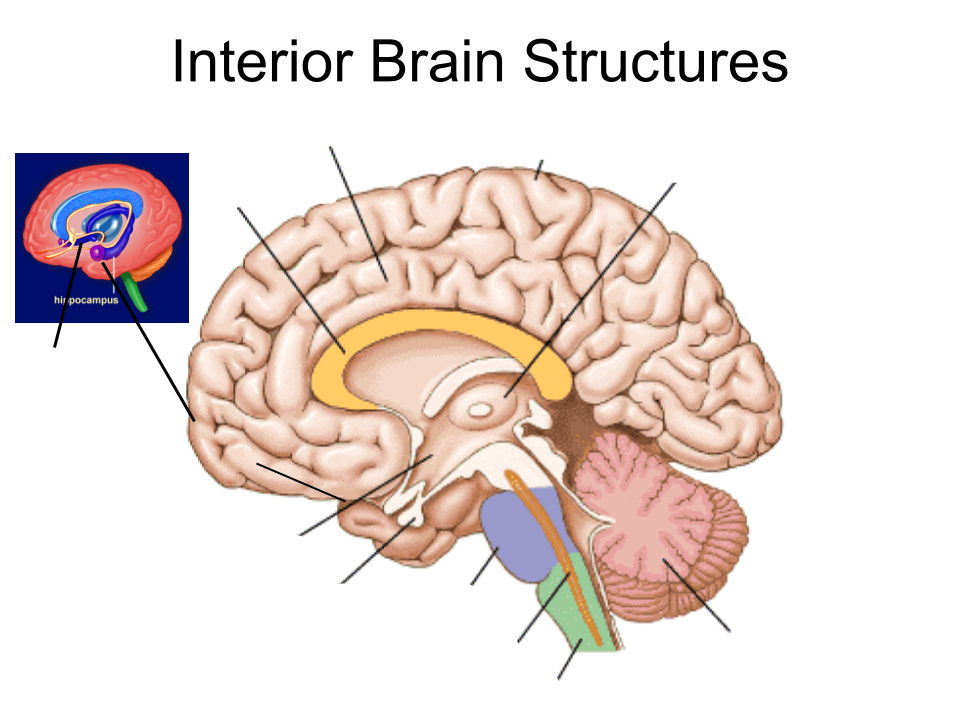
hypothalamus
part of the limbic system
hypo = lies below the thalamus
directs several maintenance activities like eating, body temperature and control of emotions
helps govern the endocrine system via the pituitary gland
linked to reward centre
Rat experiment
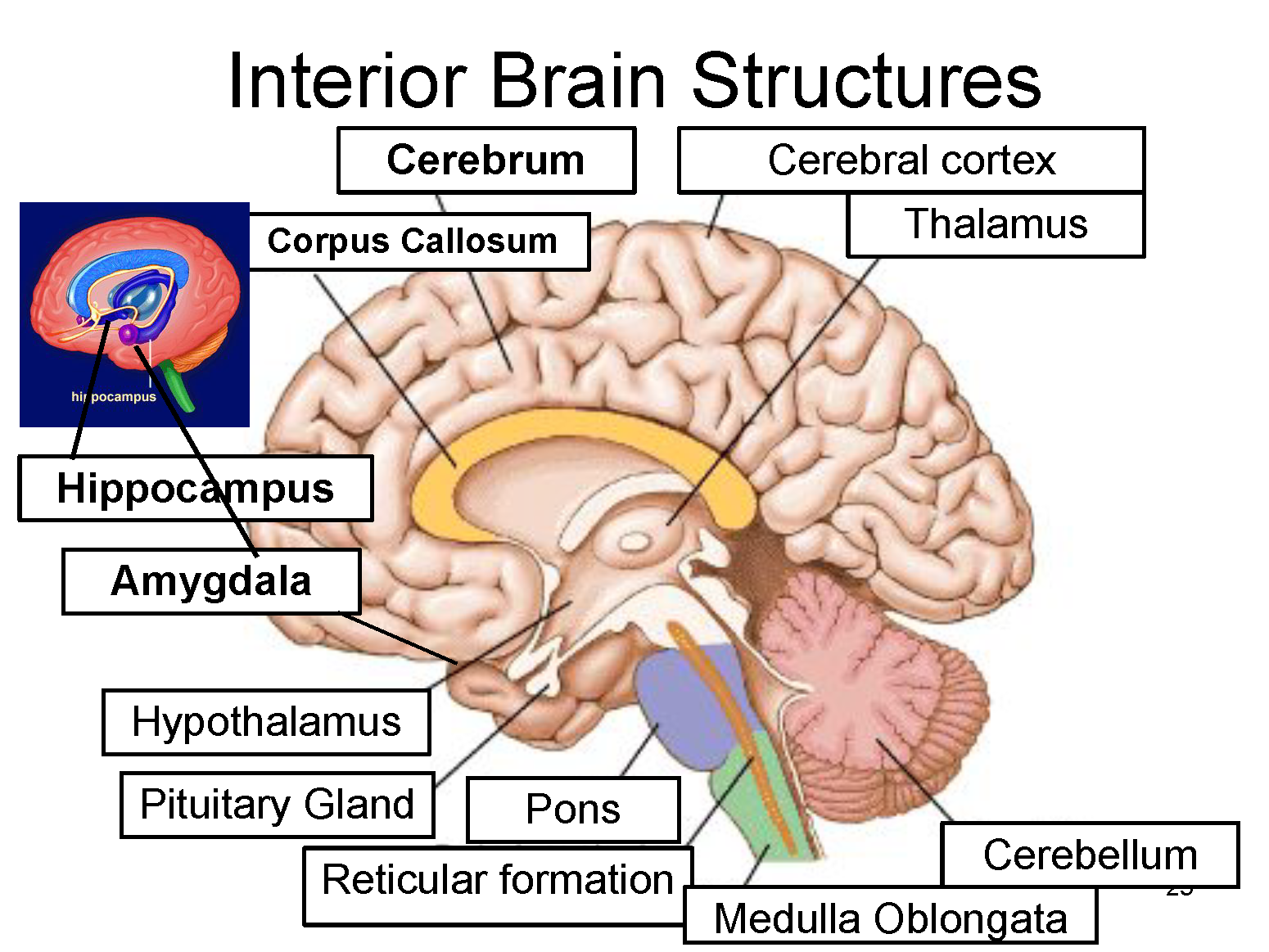
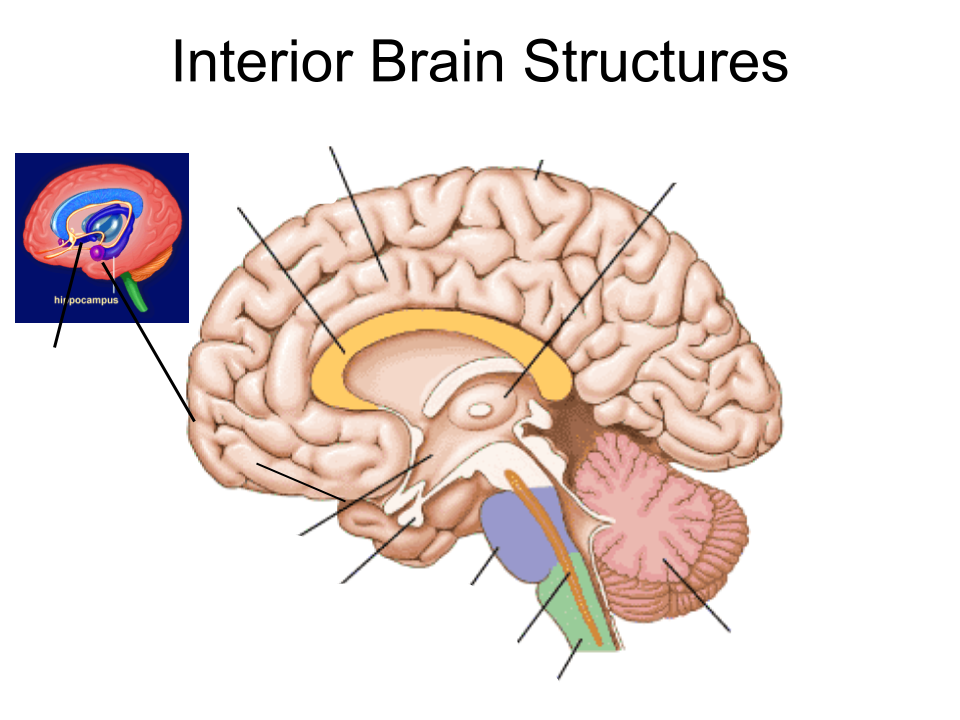
pituitary gland
the endocrine system’s most influential gland
under the influence of the hypothalamus, the pituitary regulates growth and controls other endocrine glands
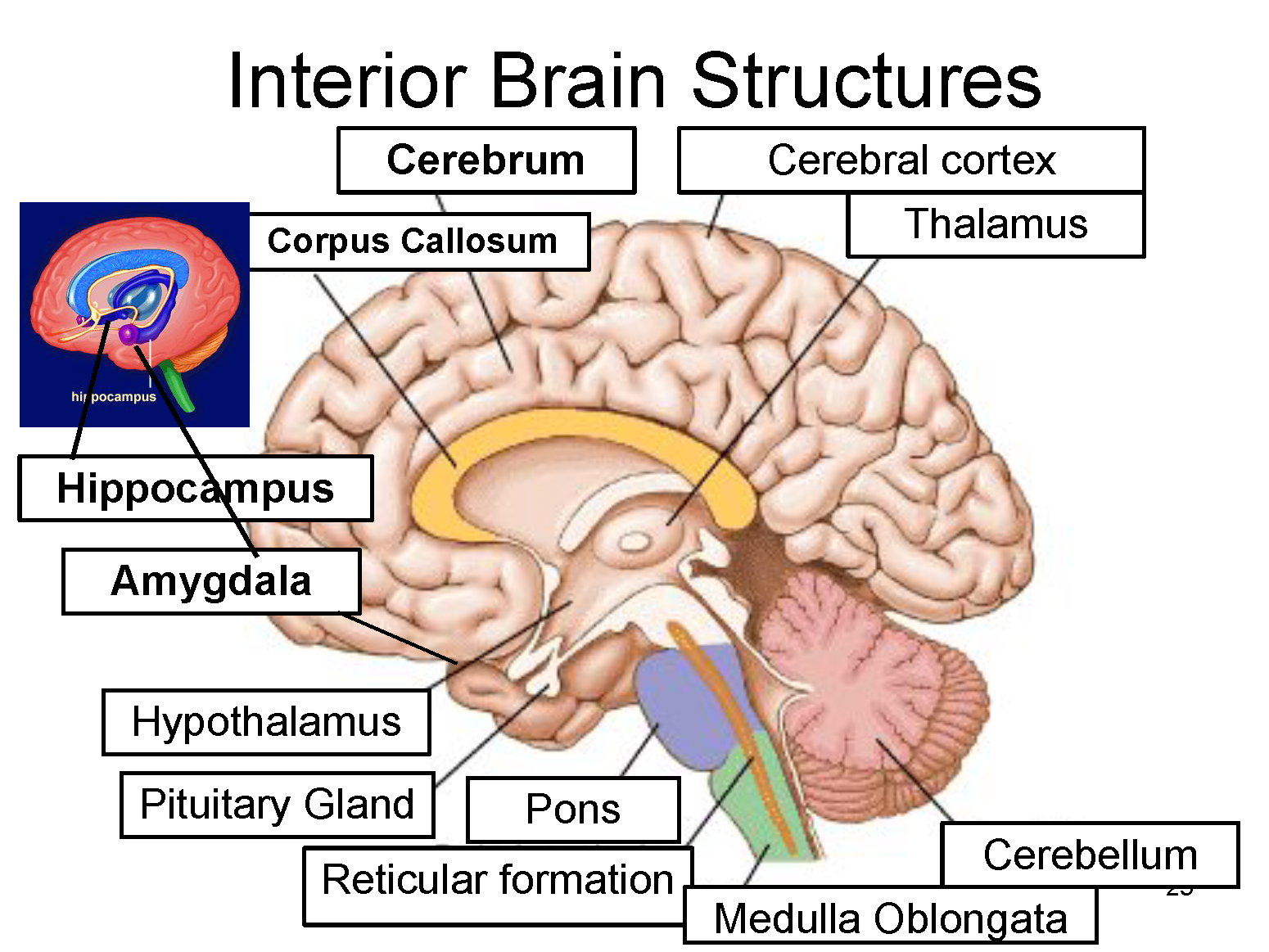
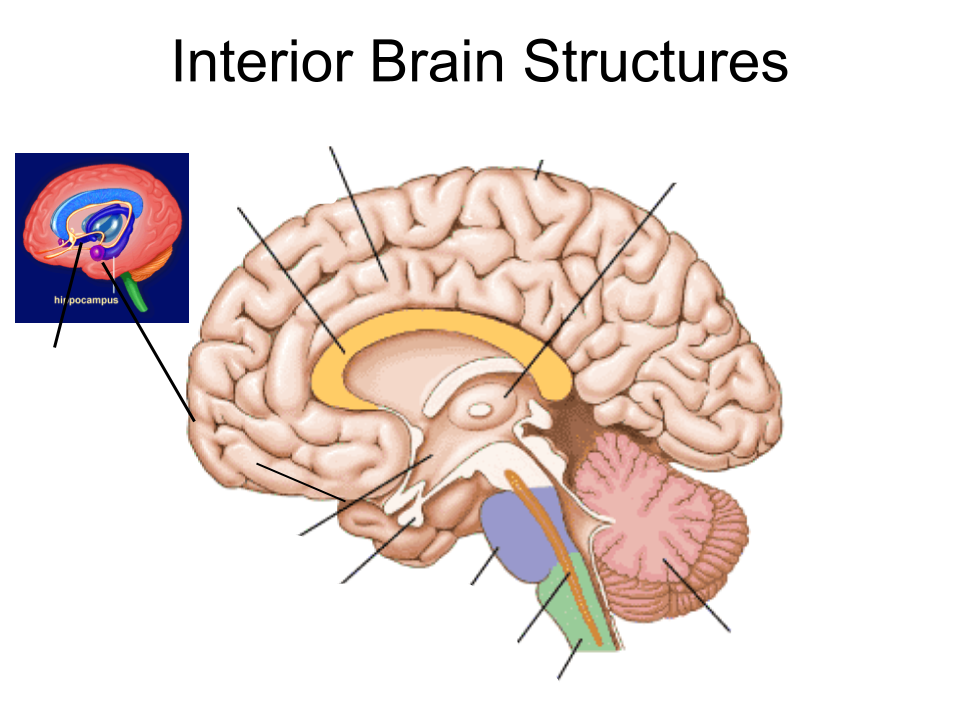
pons
part of the brainstem
helps coordinate movement
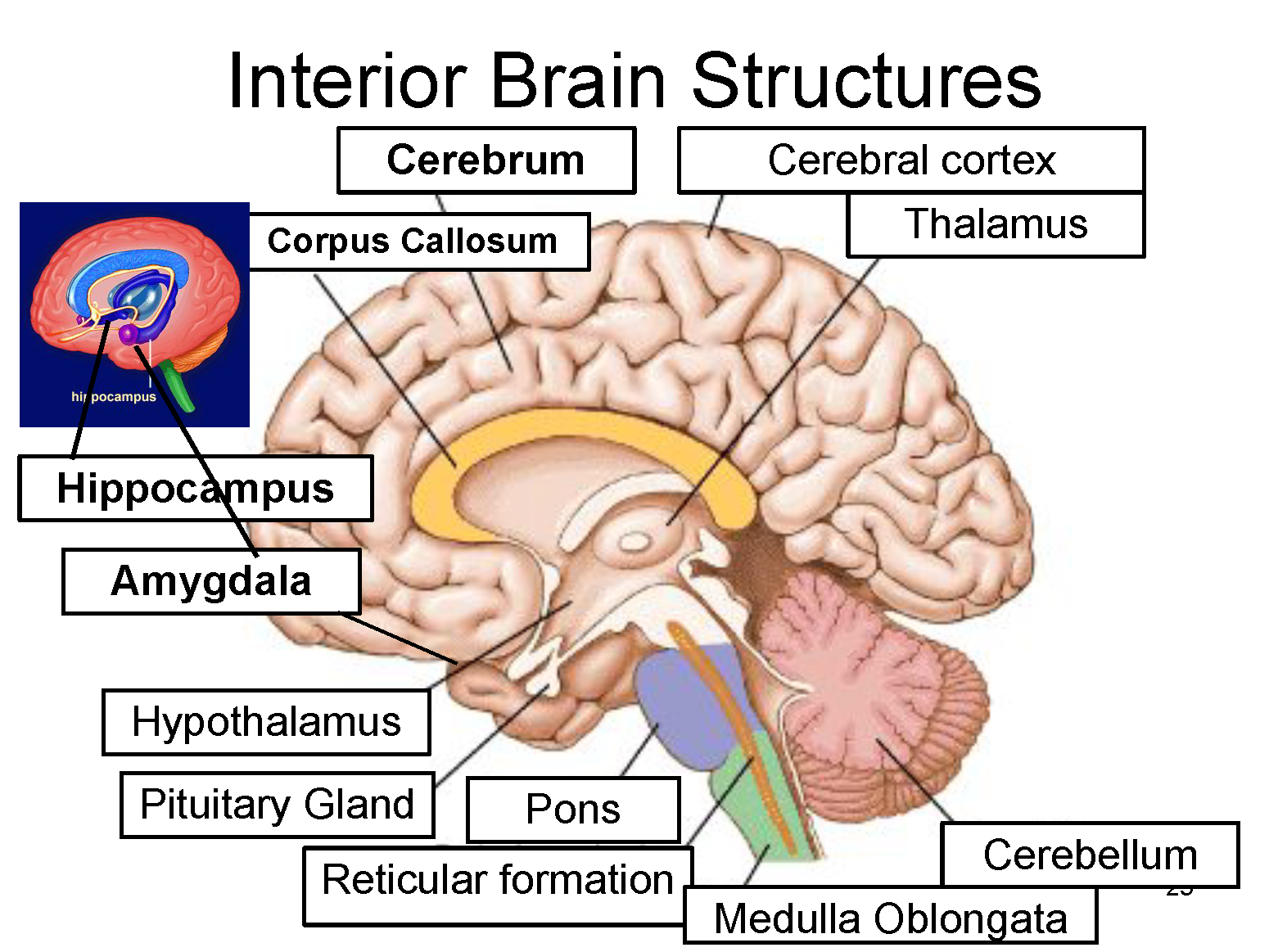
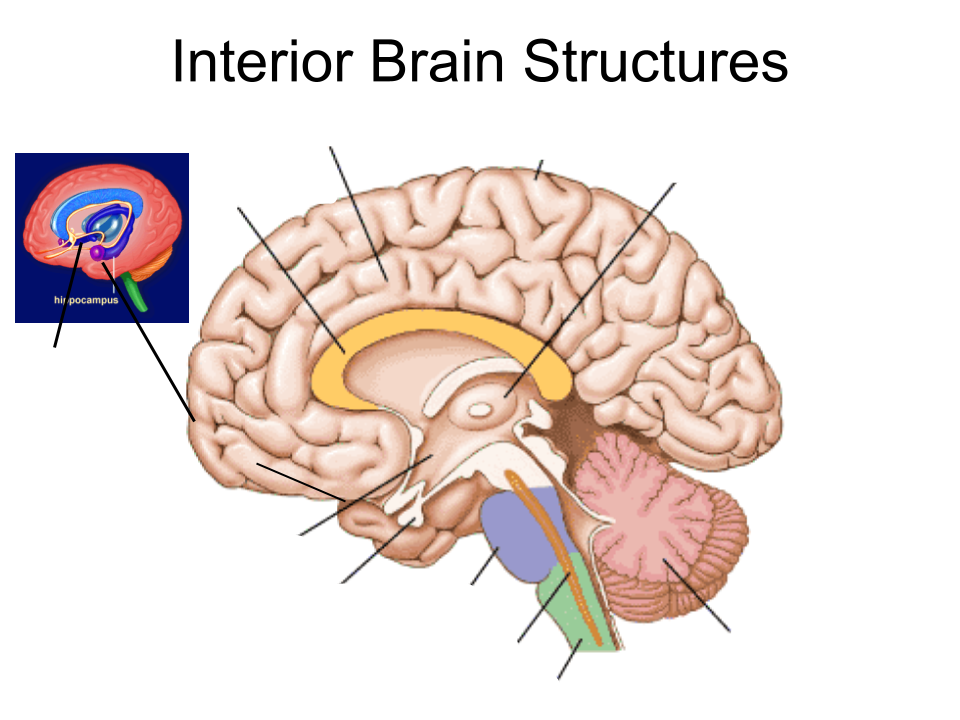
reticular formation
Nerve network in the brainstem that plays an important role in controlling arousal as it filters important information
Severed = coma
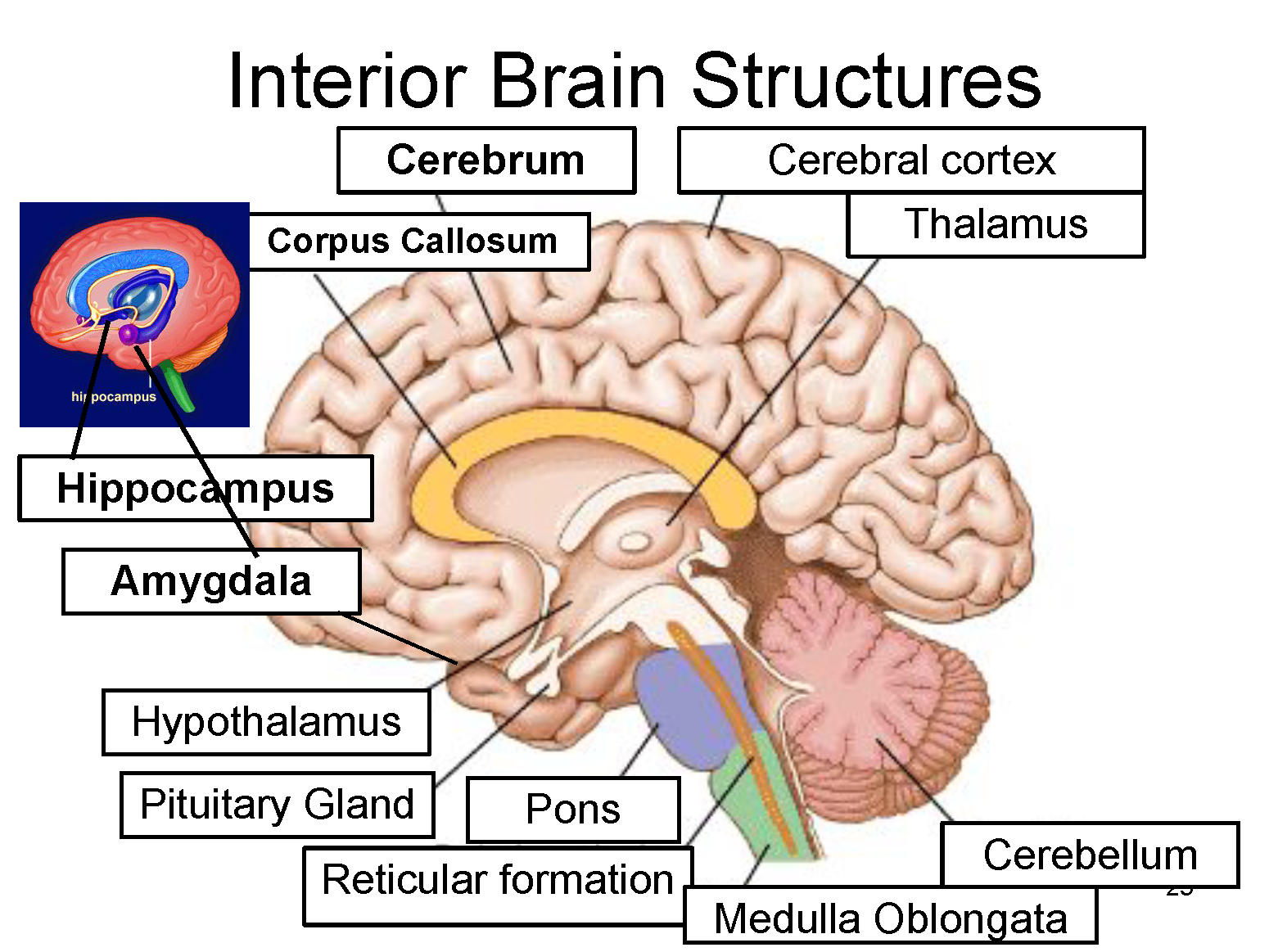
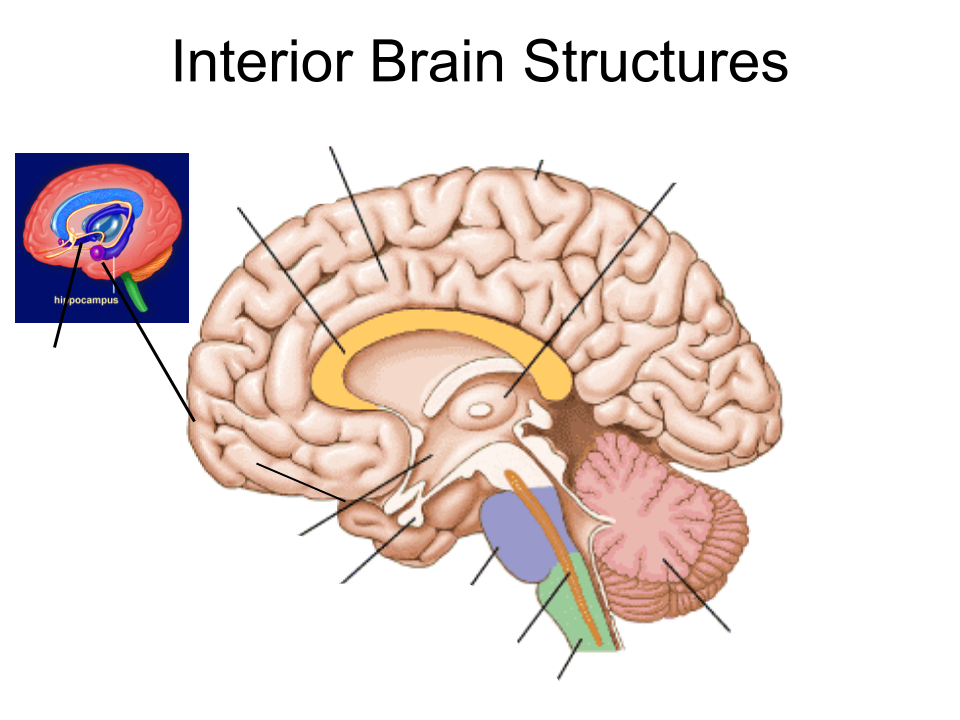
medulla oblongata
Controls heartbeat and breathing
Part of the brainstem
Located at the base of brainstem
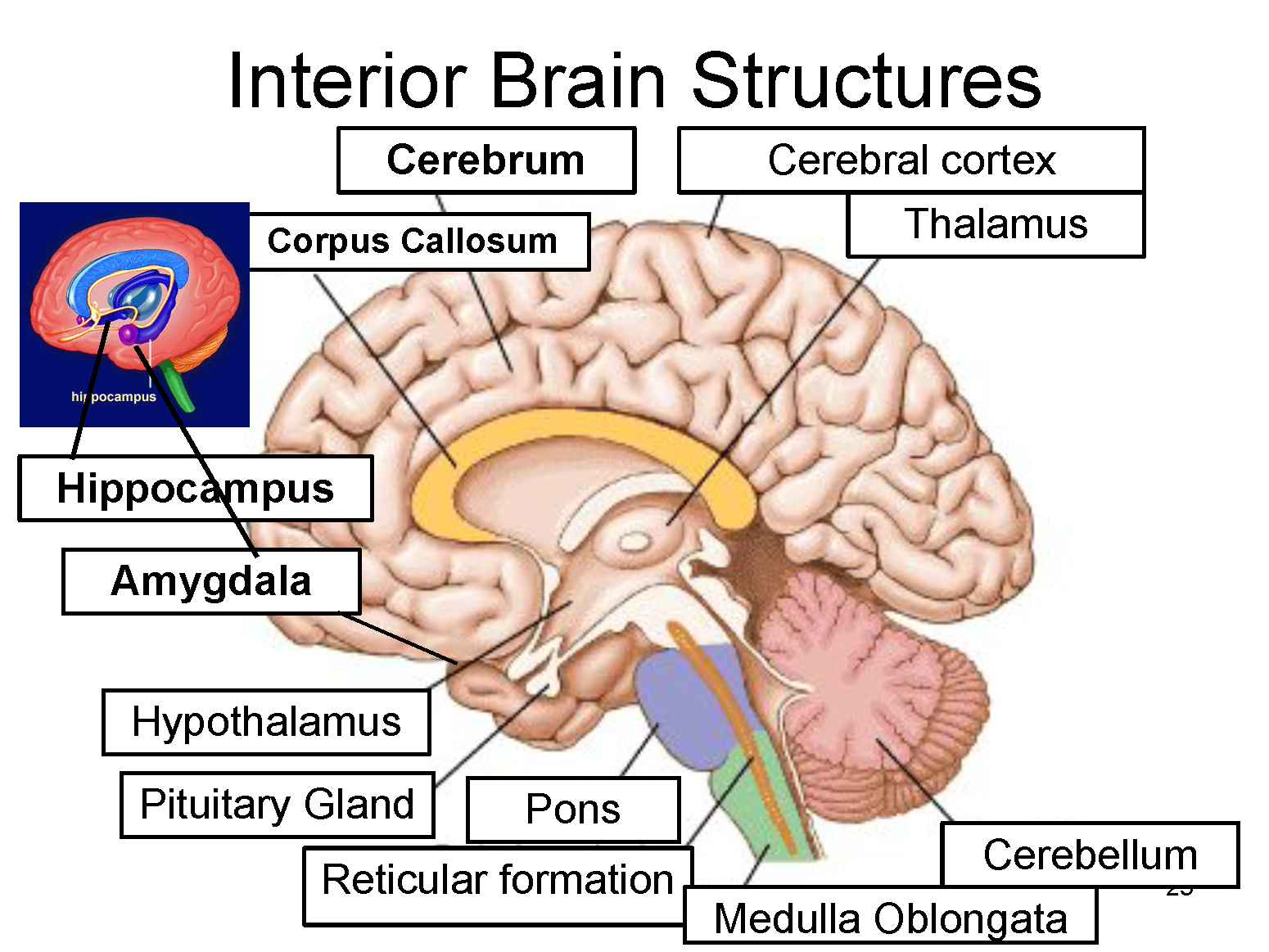

cerebellum
"little brain" attached to the rear of the brain stem
processes sensory input and coordinates movement output and balance
non-verbal memory
negatively affected by alcohol
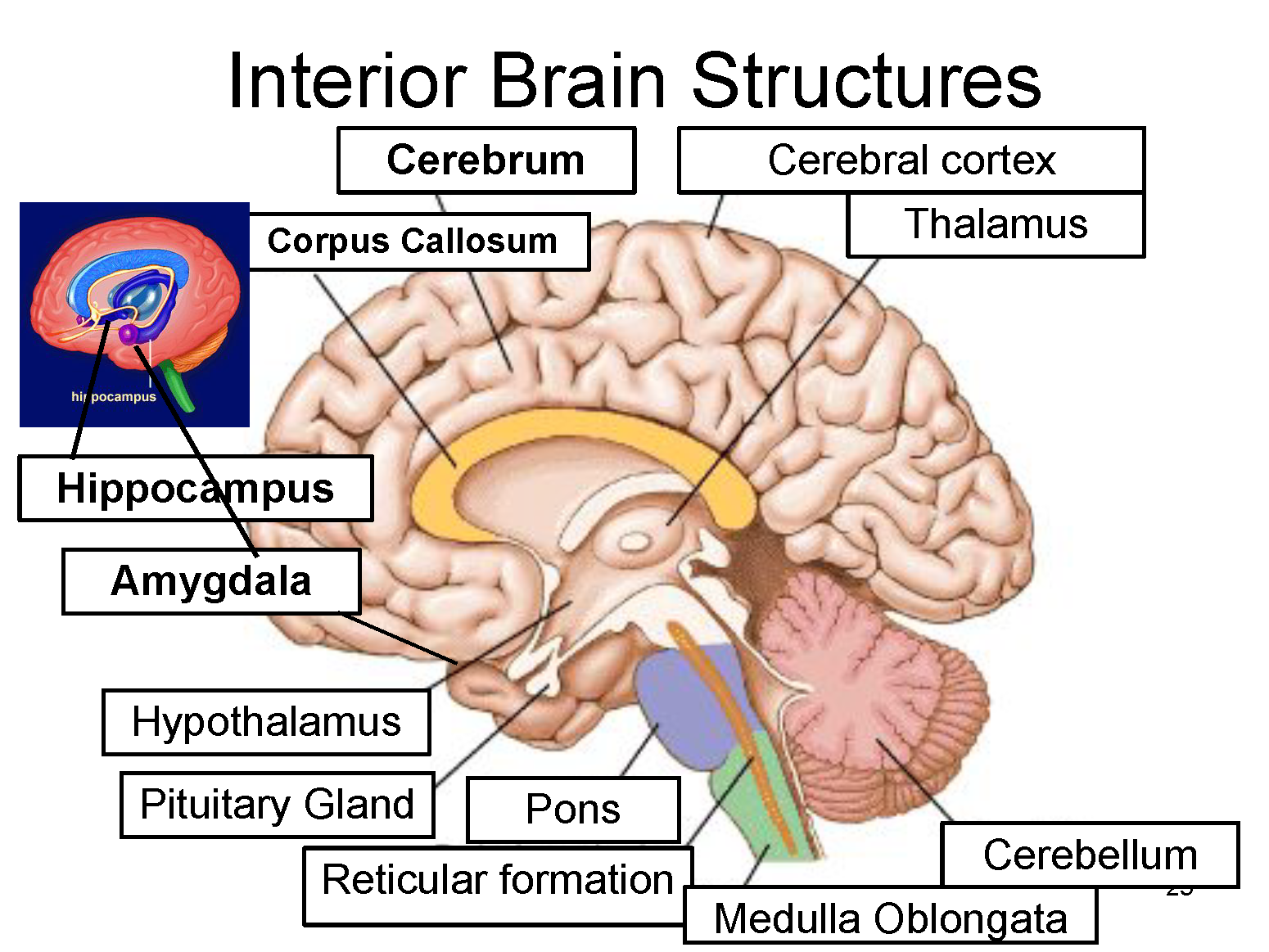
lateralization
the division of the brain into two hemispheres that differ in function
serial positioning effect
tendency to remember the first and last elements of a series
primacy and recency
hormones
chemical messengers that are manufactured by the endocrine glands, travel through the bloodstream, and affect other tissues
consciousness
our awareness of ourselves and our environment
hypnosis
a social interaction in which one person (the hypnotist) suggests to another (the subject) that certain perceptions, feelings, thoughts, or behaviours will spontaneously occur
posthypnotic suggestion
a suggestion, made during a hypnosis session, to be carried out after the subject is no longer hypnotized; used by some clinicians to help control undesired symptoms and behaviours
dissociation
a split in consciousness, which allows some thoughts and behaviours to occur simultaneously with others
circadian rhythm
the biological clock; regular bodily rhythms (for example, of temperature and wakefulness) that occur on a 24-hour cycle
REM sleep
rapid eye movement sleep; a recurring sleep stage during which vivid dreams commonly occur. Also known as paradoxical sleep, because the muscles are relaxed (except for minor twitches) but other body systems are active
alpha waves
the relatively slow brain waves of a relaxed, awake state